A quick review of the BenQ RD280U professional programming monitor, designed exclusively for programmers, featuring a 3:2 aspect ratio, 28-inch 4K resolution, and multi-device KVM functionality.
Review video: https://www.bilibili.com/video/BV1EcszzpEck/
Introduction
I recently received the BenQ RD280U monitor for review, and I've been using it as my primary display. The experience has been quite impressive.
This monitor's main selling point is being the world's first professional programming monitor specifically designed for programmers, precisely targeting the core pain points developers face in daily coding - such as limited code lines on traditional 16:9 screens, frequent cable plugging/unplugging for device switching, and eye strain from prolonged screen time. Its core advantages are clear: a 28.2-inch 4K Ultra HD screen with a 3:2 productivity-oriented aspect ratio that displays approximately 20% more code lines than regular monitors, reducing the need for constant scrolling; exclusive programming modes (Light/Dark dual themes) that optimize code color contrast for clearer syntax highlighting, making complex code easier to distinguish; support for KVM multi-host switching and MST daisy-chaining for multi-monitor setups, allowing one display to connect to both desktop and laptop without needing to switch keyboard and mouse; MoonHalo smart ambient lighting and hardware-level Low Blue Light Plus technology, plus five TÜV Rheinland eye-care certifications, protecting your eyes during late-night coding sessions; paired with Display Pilot 2 customization software for one-click color mode switching, desktop partitioning, and customizable keyboard shortcuts for quick function switching, significantly improving both efficiency and comfort whether you're coding or multitasking.
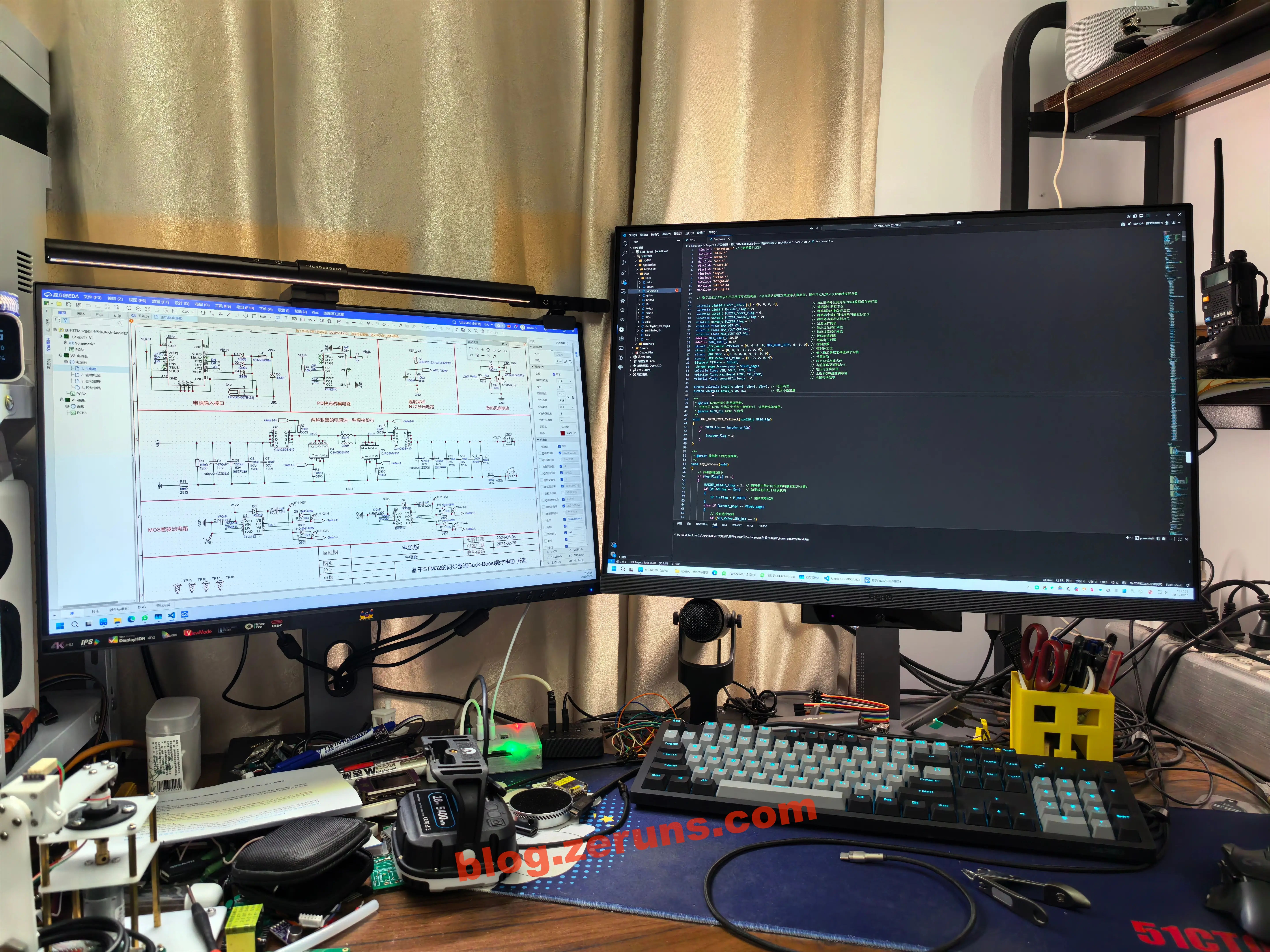
RD280U Monitor Specifications
- Panel Type: IPS wide-viewing angle panel
- Screen Size: 28.2 inches
- Optimal Resolution: 3840x2560@60Hz (4K UHD)
- Aspect Ratio: 3:2
- Contrast Ratio: 1200:1 (typical)
- Brightness: 350cd/m² (typical); HDR peak brightness 400 cd/m² (supports HDR10, VESA DisplayHDR 400)
- Viewing Angles: 178°/178°
- Response Time: 5ms
- Surface Coating: Nano Matte Panel (BenQ's exclusive eye-care technology non-reflective panel)
- Color Gamut: 95% DCI-P3
- Color Depth: 1.07 billion colors (10-bit)
- PPI: 164
- HDCP: 2.2
- Special Features: Coding Mode; KVM multi-host switching, MST multi-stream transport; MoonHalo smart ambient lighting; 6 TÜV Rheinland certifications (including EyeSafe 2.0, hardware-level low blue light, flicker-free); 2nd generation intelligence light adjustment, color weakness mode; Display Pilot 2 software (supports Flow scenarios, desktop partitioning)
- Rated Voltage: 100 - 240V
- Power Consumption: Standard 34W, Maximum 205W
Ports:
- HDMI (v2.0) x1
- DisplayPort (v1.4) x1
- USB-C (PowerDelivery 90W, DisplayPort Alt Mode, Data) x1
- USB Type-B Upstream (USB 3.2 Gen 1, 5 Gbps, data only) x1
- USB Type-A Downstream (USB 3.2 Gen 1, 5 Gbps, 4.5W power charging) x3
- USB Type-C Downstream (USB 3.2 Gen 1, 5 Gbps, 7.5W power charging) x1
- 3.5mm headphone jack x1
Also features built-in 2Wx2 speakers, meeting daily notification and simple video conferencing needs.
Purchase Links:
- JD.com: https://u.jd.com/pgMntNw
- Taobao: https://s.click.taobao.com/QpPFr4q
Unboxing
The front of the box - it's quite heavy, over 10kg.
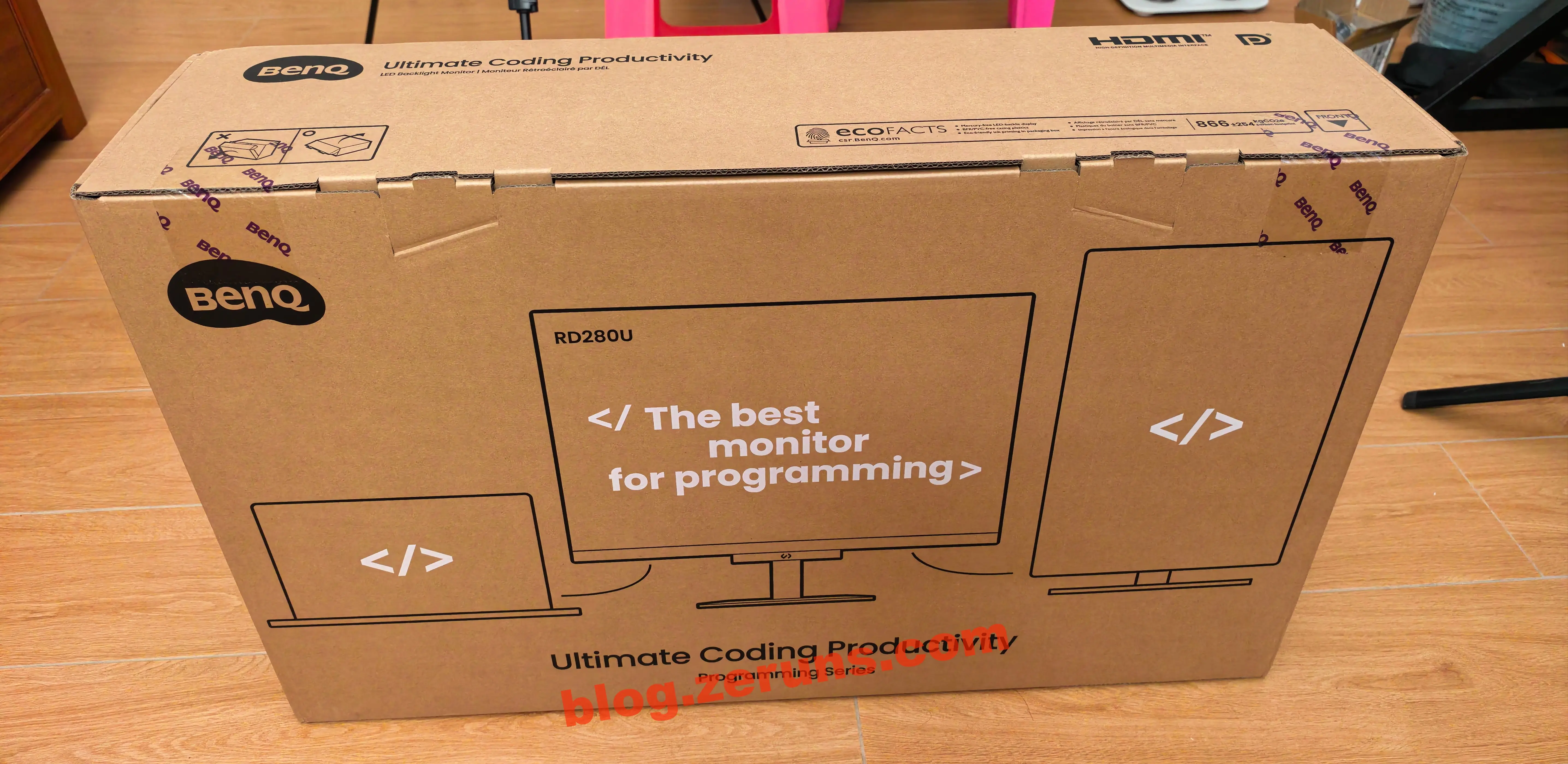
The back of the box
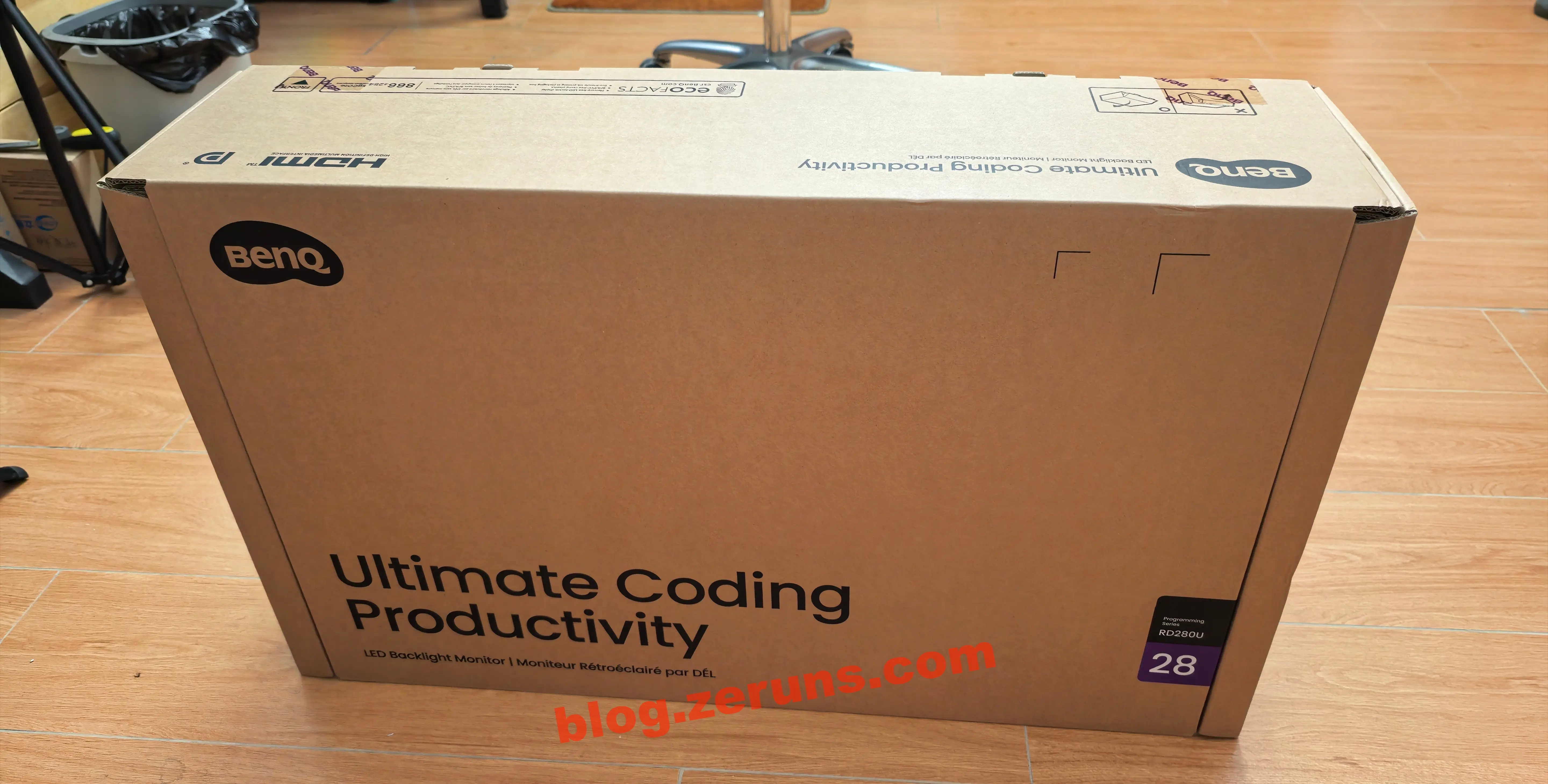
The side of the box has a label with the following main information:
- Model: RD280U-L
- Color: Metallic Gray
- Maximum Resolution: 3840x2560
- Version: 00-029-KB
- Package Weight: 16.07 kg
- Production Date: September 2025
- Package Dimensions: 870(L) x 224(W) x 525(H) mm
- Manufacturer: BenQ Intelligent Technology (Shanghai) Co., Ltd.
There's also an energy efficiency label showing Level 3 efficiency.
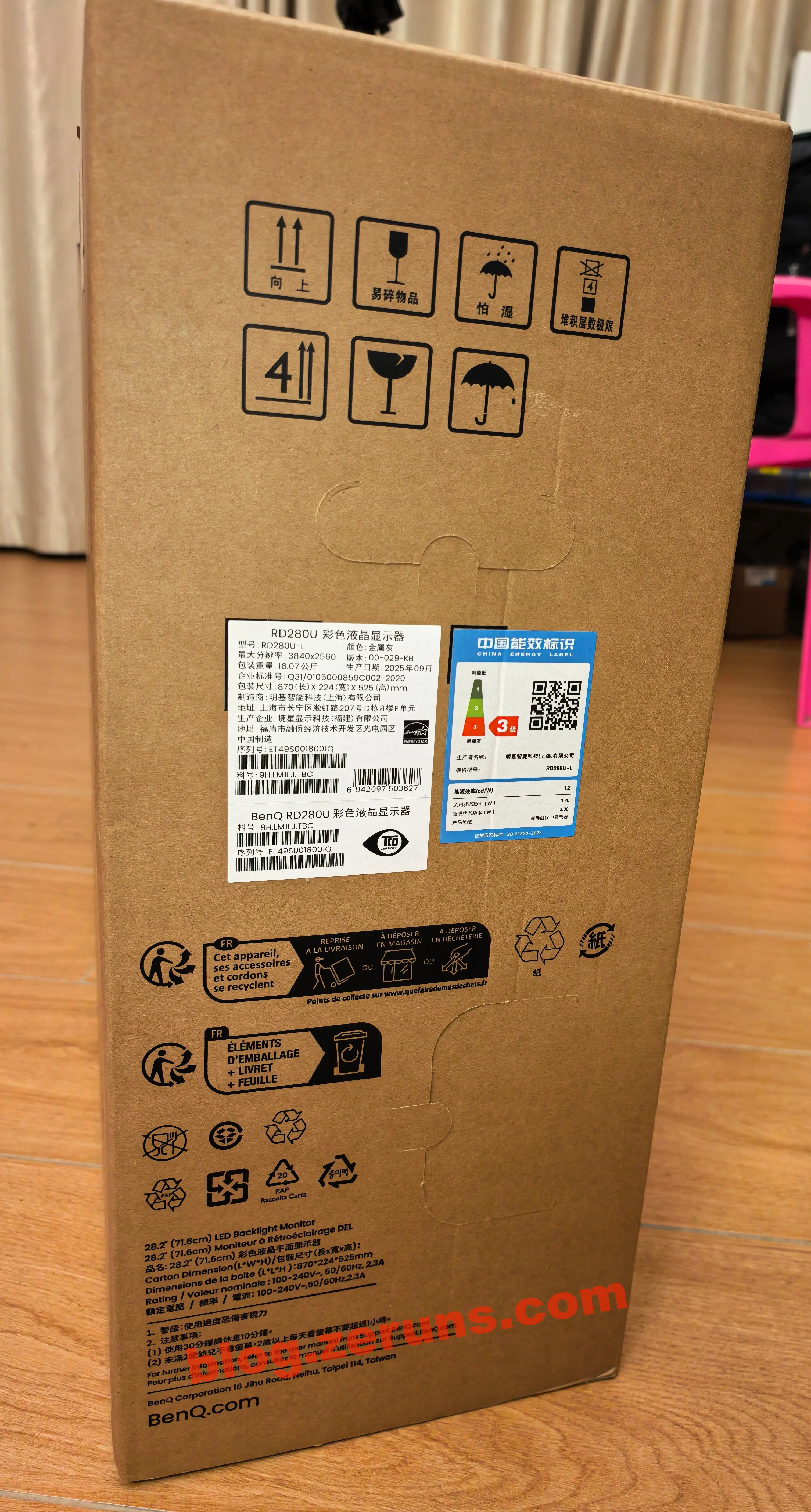
Unboxing - the contents are divided into upper and lower layers. The upper layer contains the base and accessories.
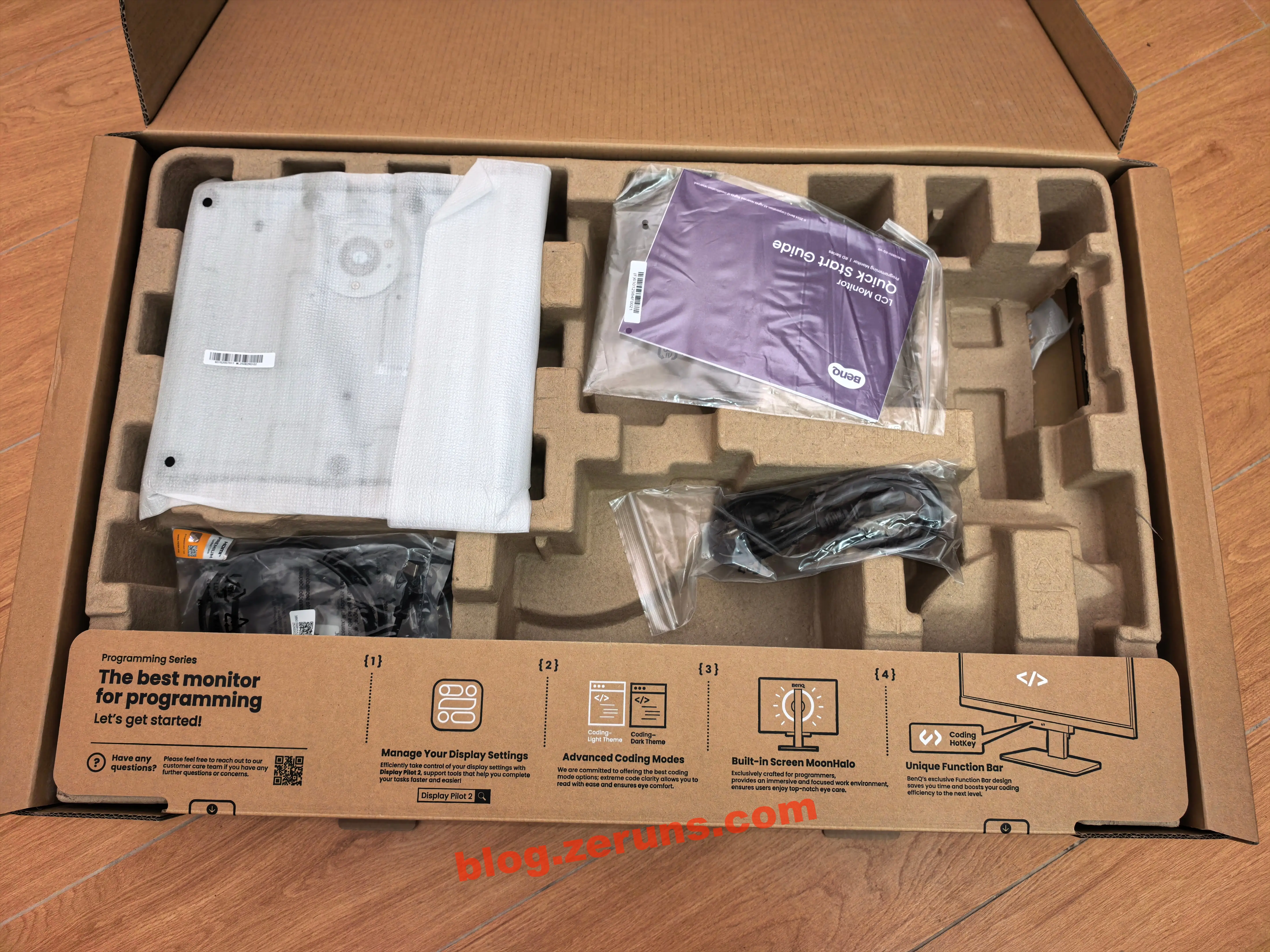
Included cables: IEC power cord, HDMI cable, USB-A to B cable, and dual Type-C male cable.
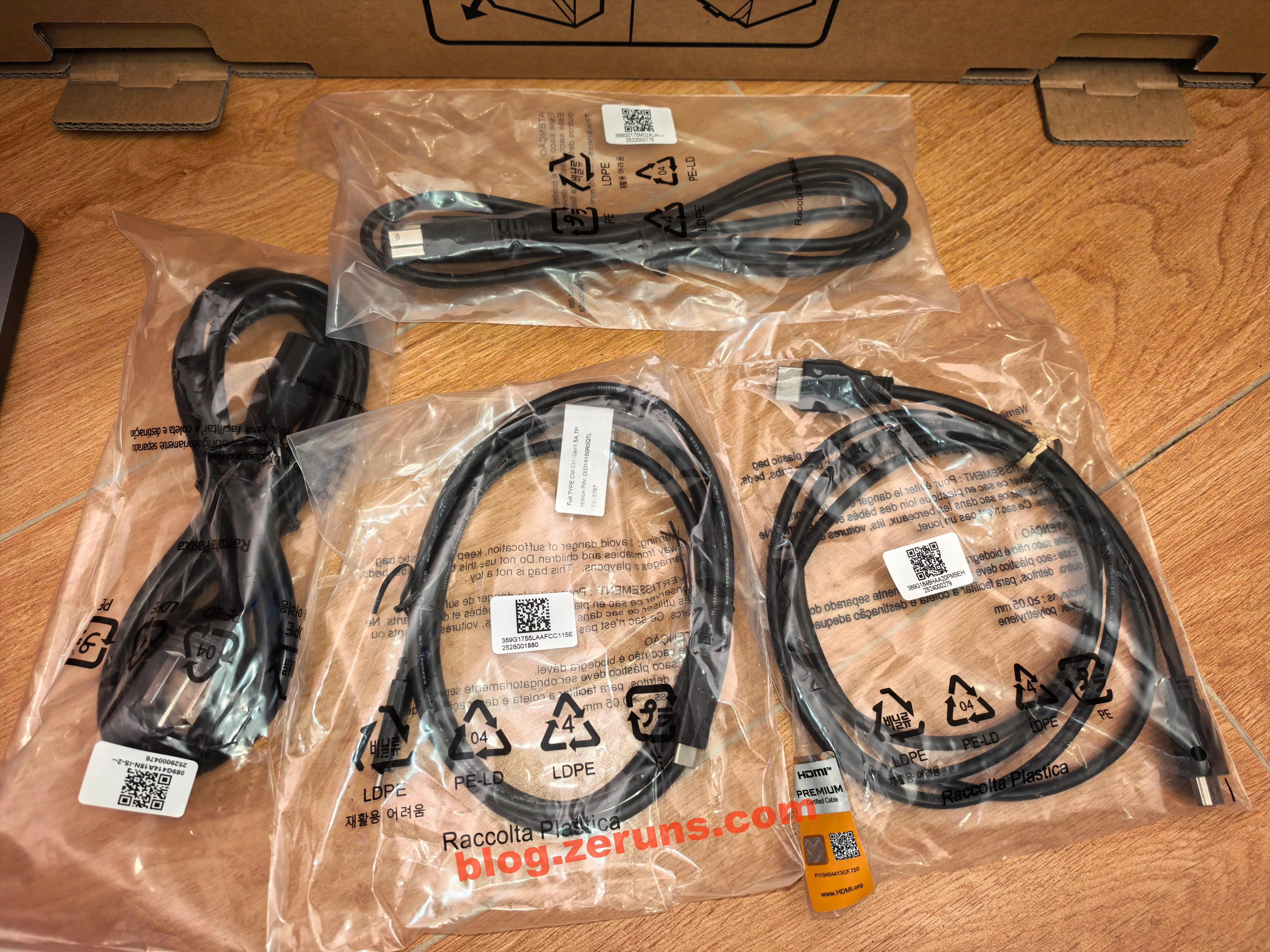
The base
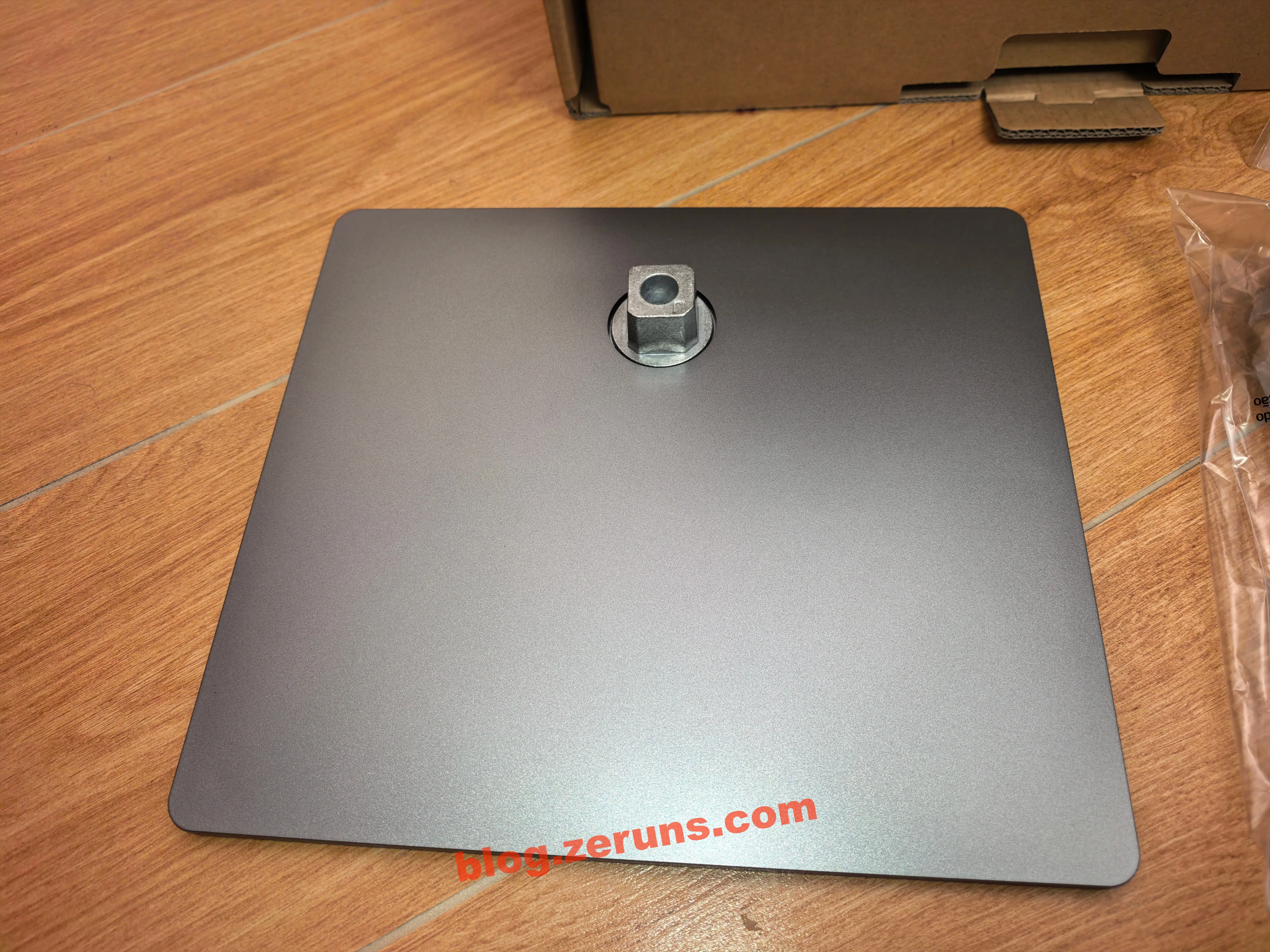
The lower layer contains the screen and stand.
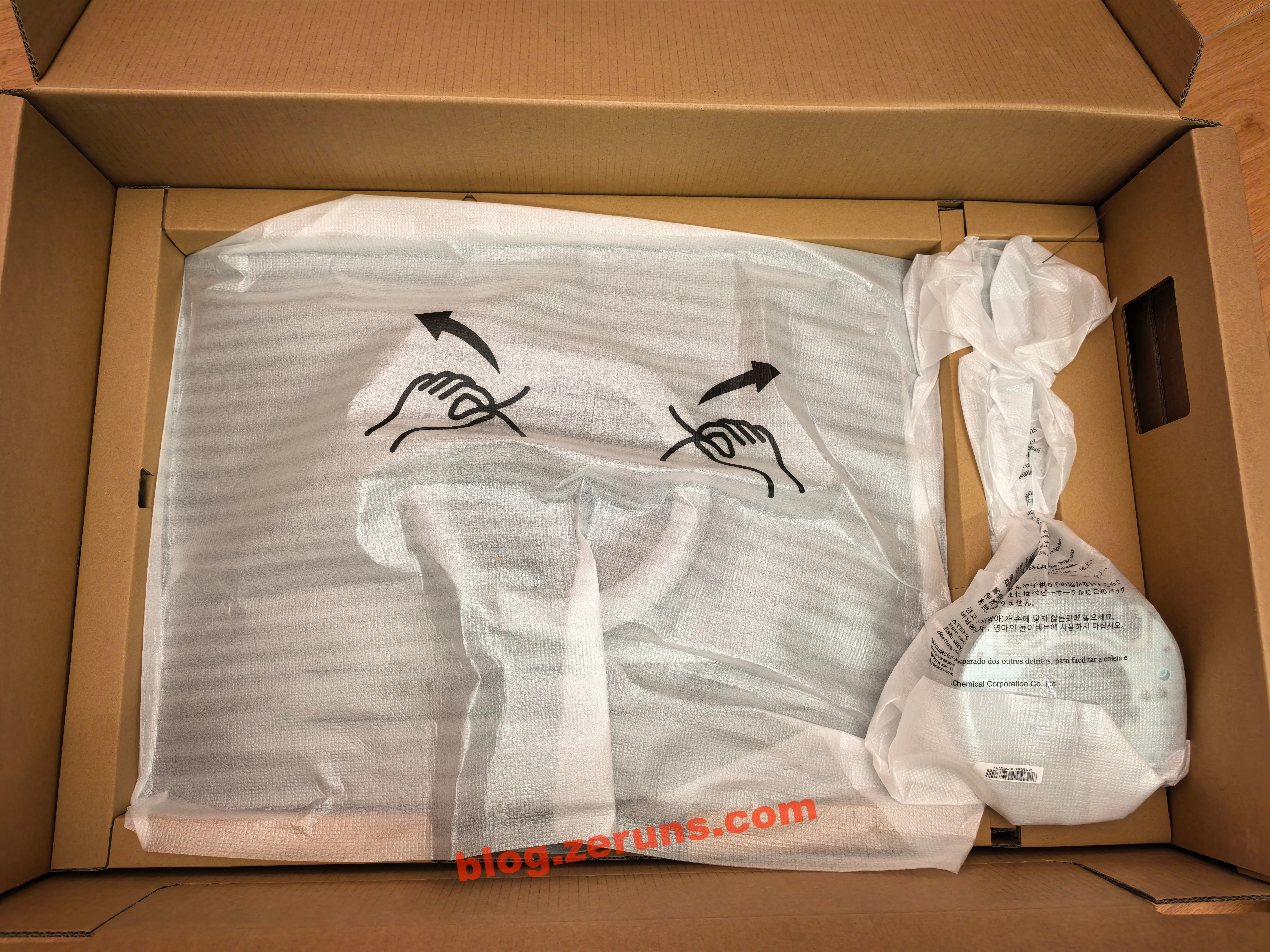
Assembling the base and stand.
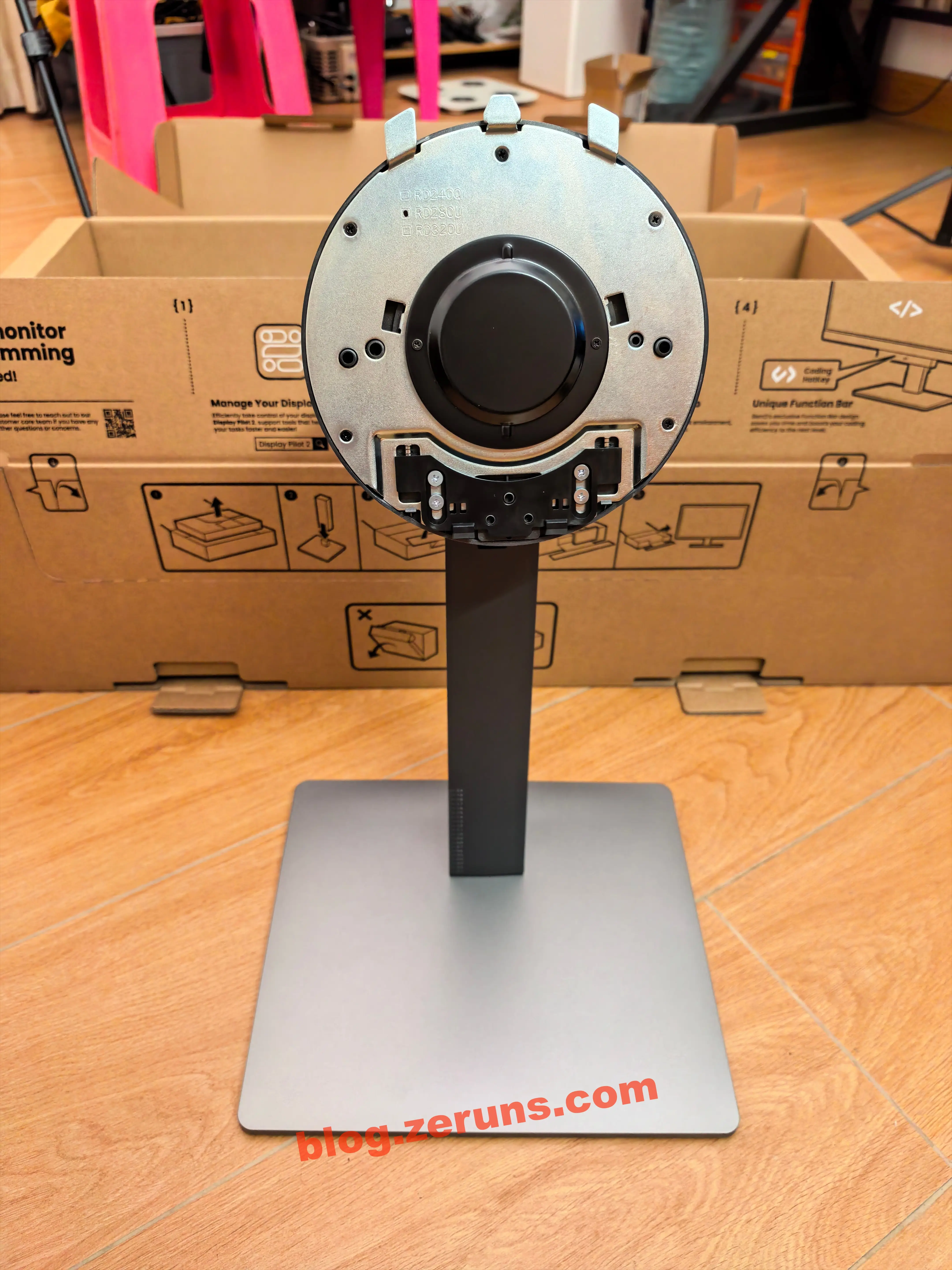
Attaching the screen - it's quite heavy, around 10kg, giving it a substantial feel.
Front of the screen
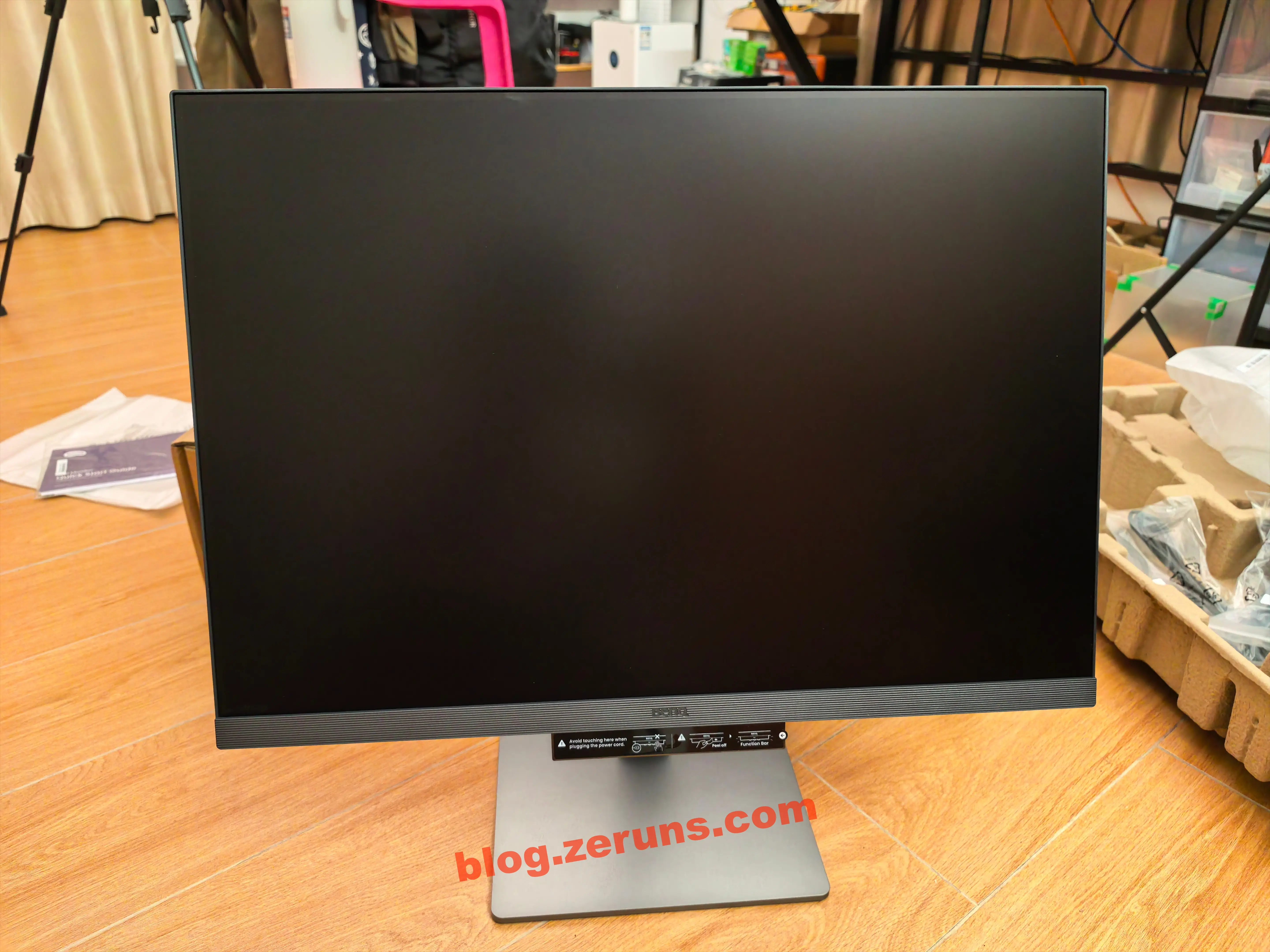
Back of the screen - there's an ambient light ring around the stand area, which BenQ calls the MoonHalo smart ambient lighting.
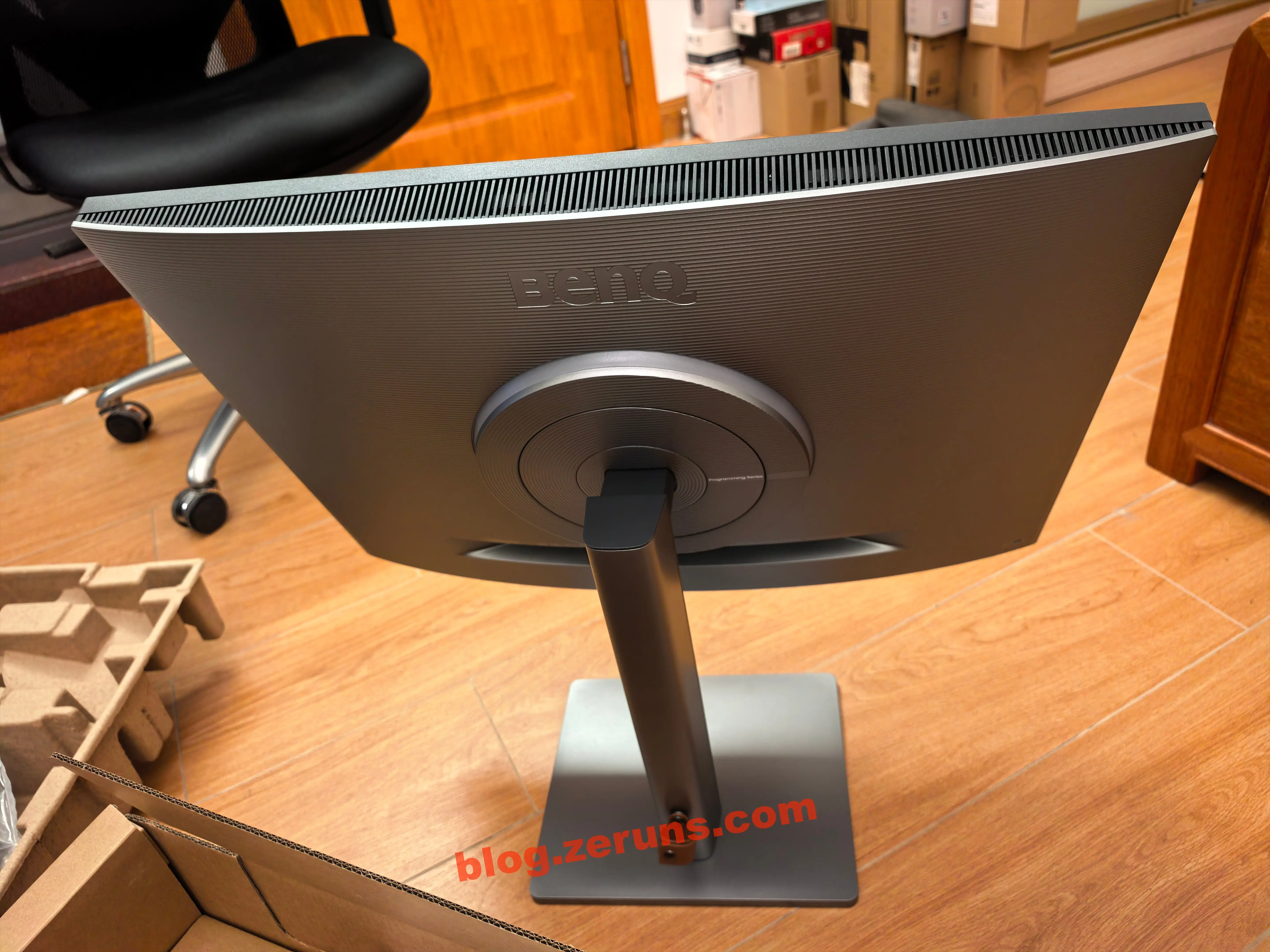
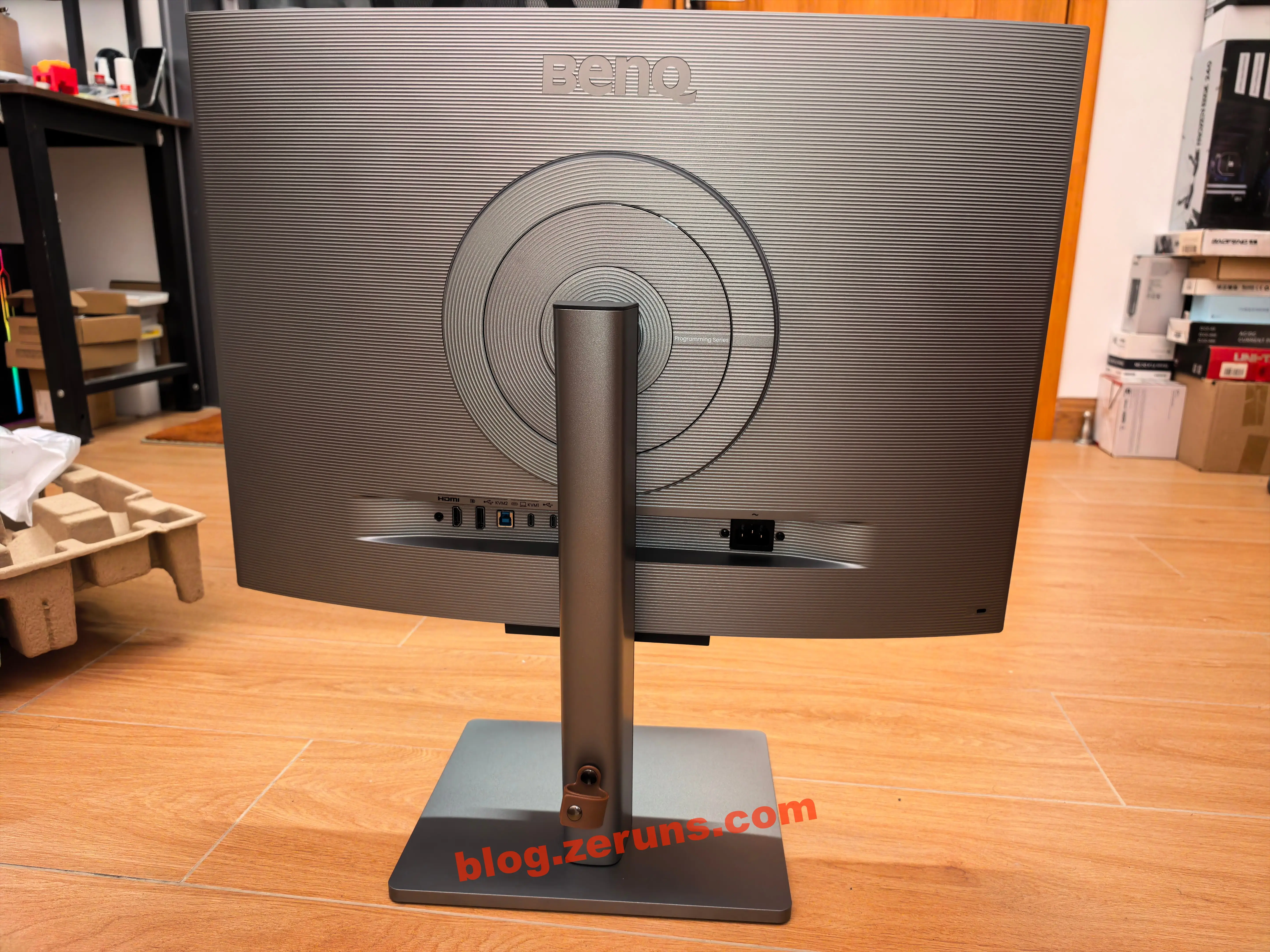
Bottom center of the screen, from left to right: power button, menu button (5-way joystick), custom button (defaults to input source switching).
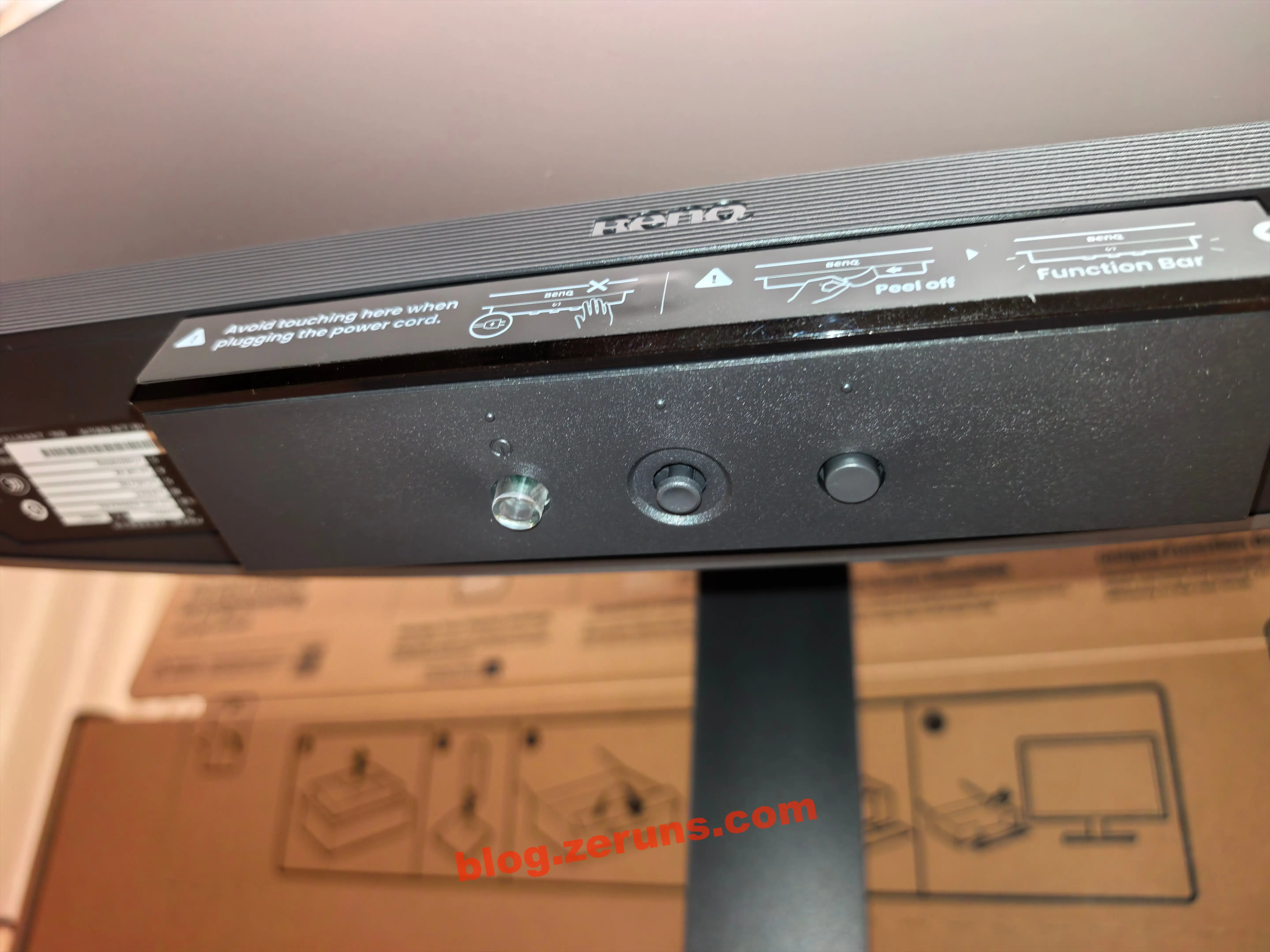
Left side ports on the back of the screen, from left to right: HDMI, DP, USB Type-B, and two full-featured Type-C ports. One Type-C port supports PD 90W output and input of video and USB signals (single-cable solution); for KVM functionality, HDMI, DP, and Type-B form one input group, while Type-C forms another input group.
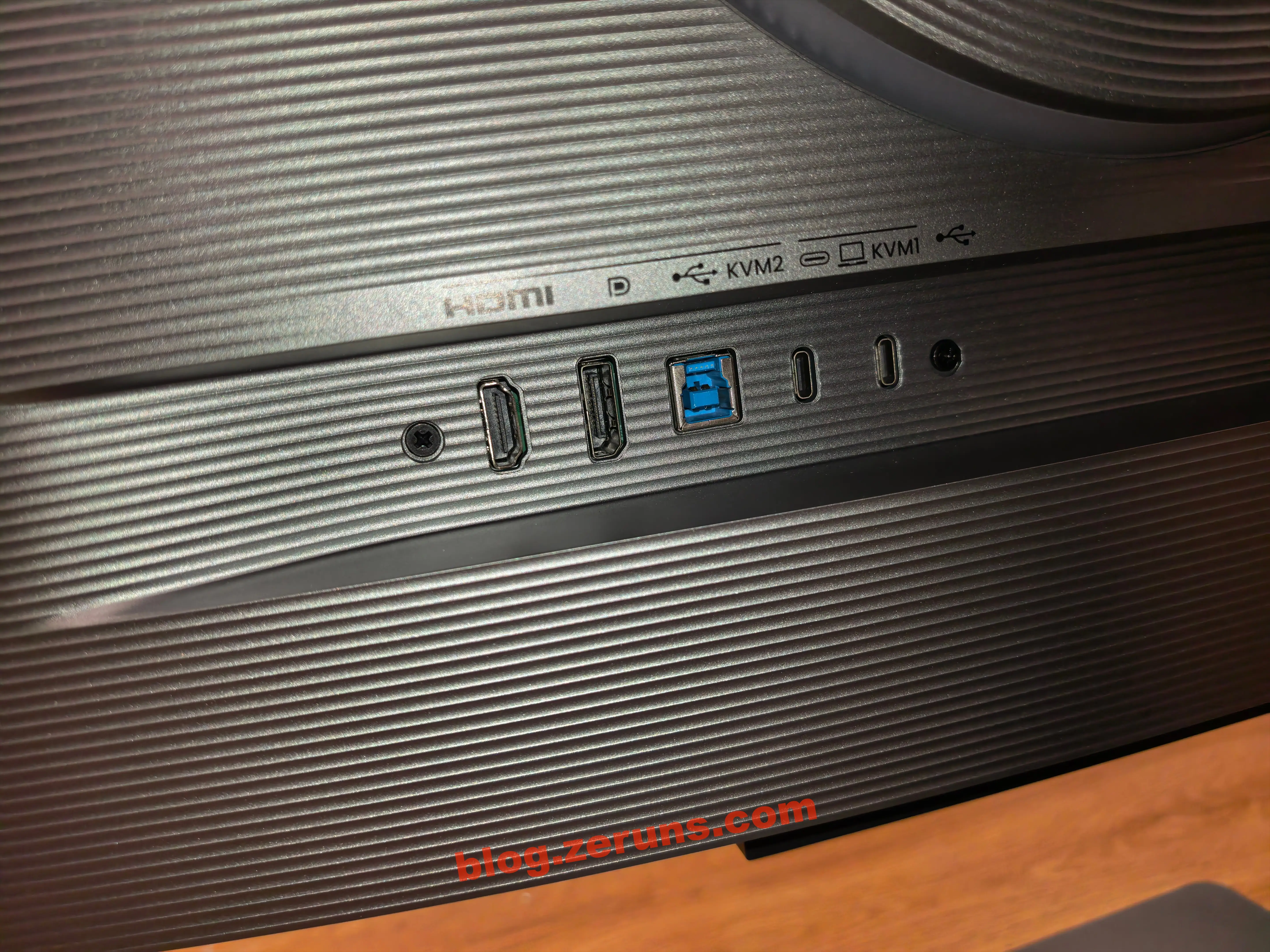
Right side port on the back is the IEC power inlet, with an internal power supply.
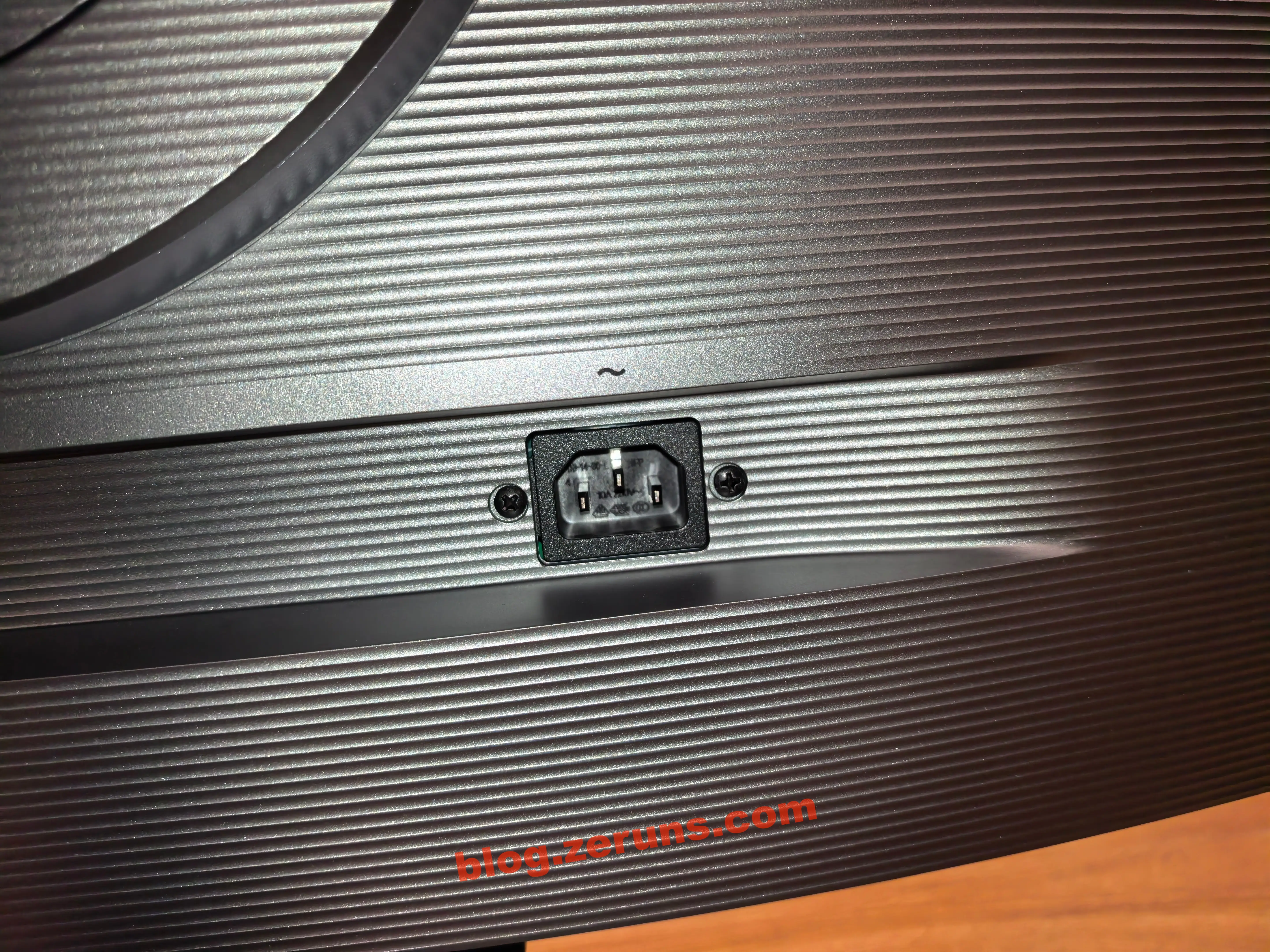
Bottom right of the screen has 3 USB-A ports and 1 3.5mm headphone jack. All three A ports operate at 5Gbps (extended from the Type-B or Type-C input on the back, switching with the input source to enable KVM functionality - you can connect keyboard and mouse here to control two computers with one set).
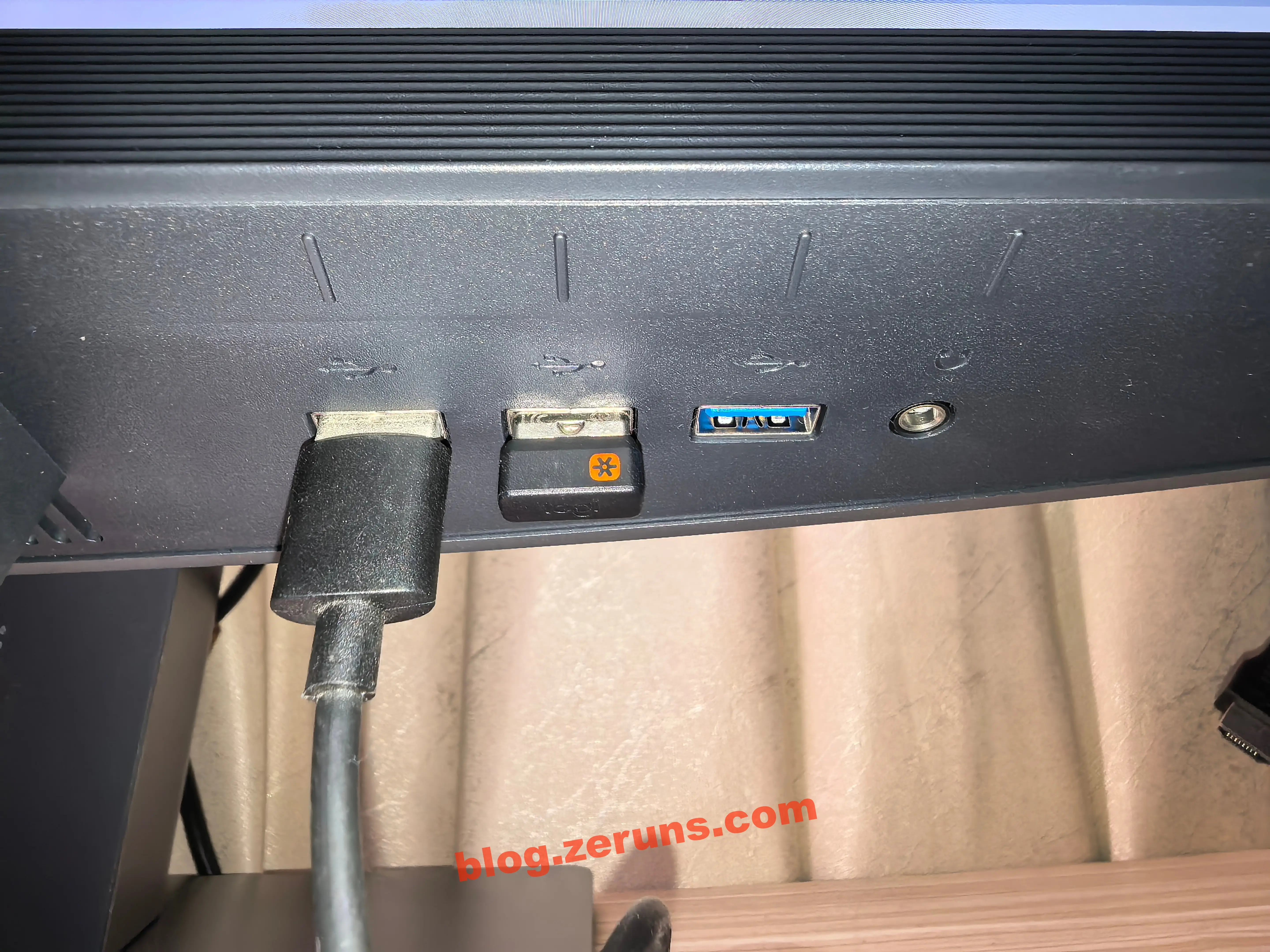
Nameplate on the bottom left of the screen.
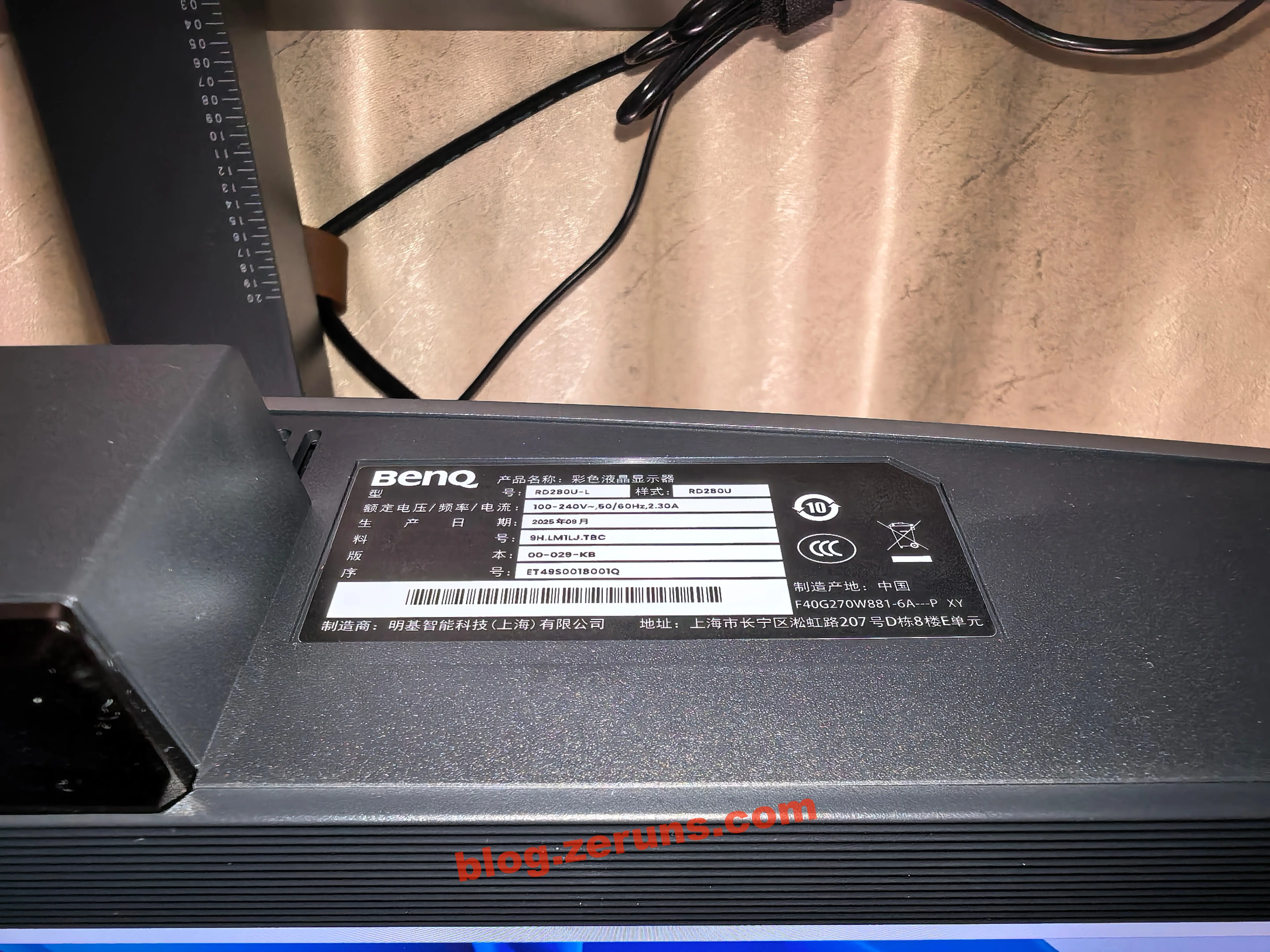
Review
Plugged in and connected to my laptop via Type-C cable, playing HDR video - looks quite good.
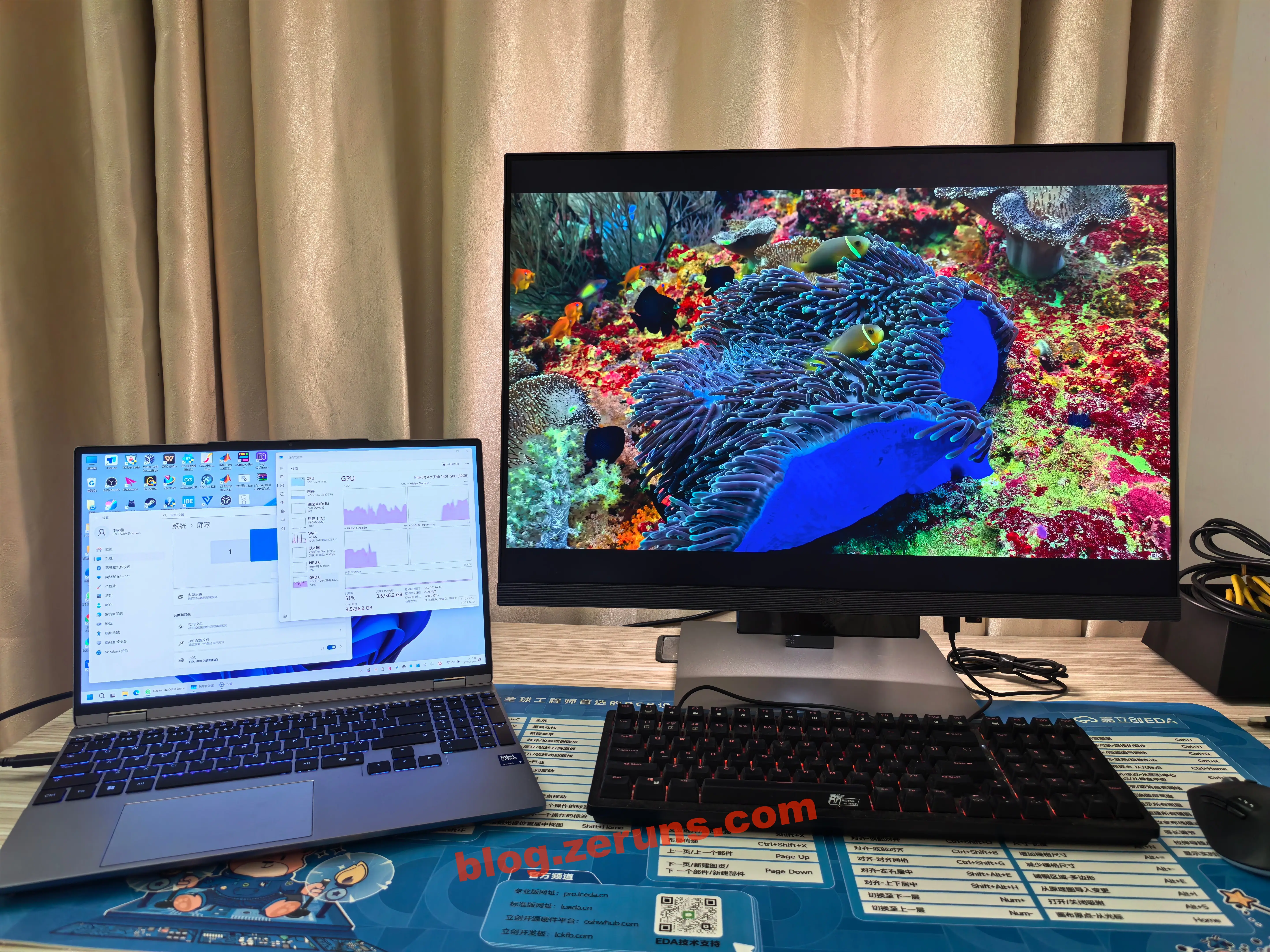
The included Display Pilot 2 software allows quick monitor settings within the system.
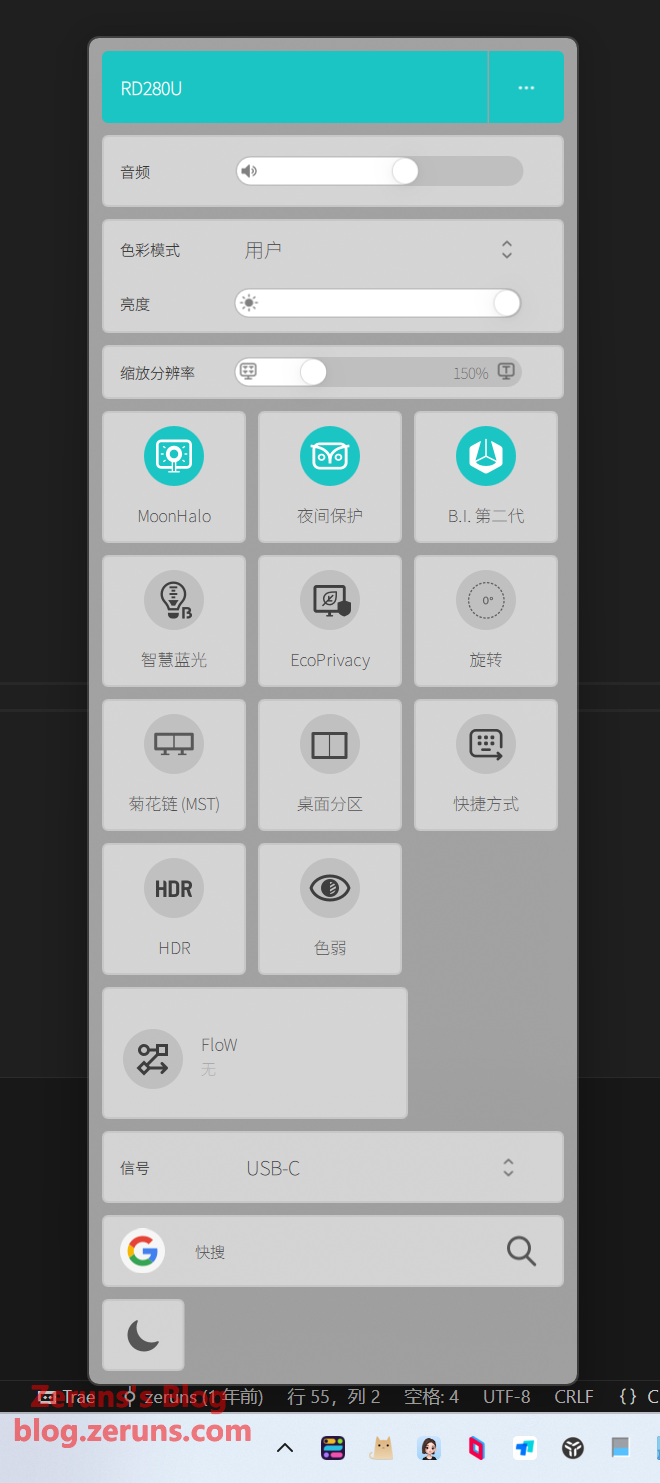
The "MoonHalo smart ambient lighting" effect in a dark room - quite impressive. Both the ambient light and screen brightness automatically adjust based on ambient light. MoonHalo helps reduce glare between ambient light and screen light, allowing programmers to maintain focus during night work while providing the best coding and eye-care experience.
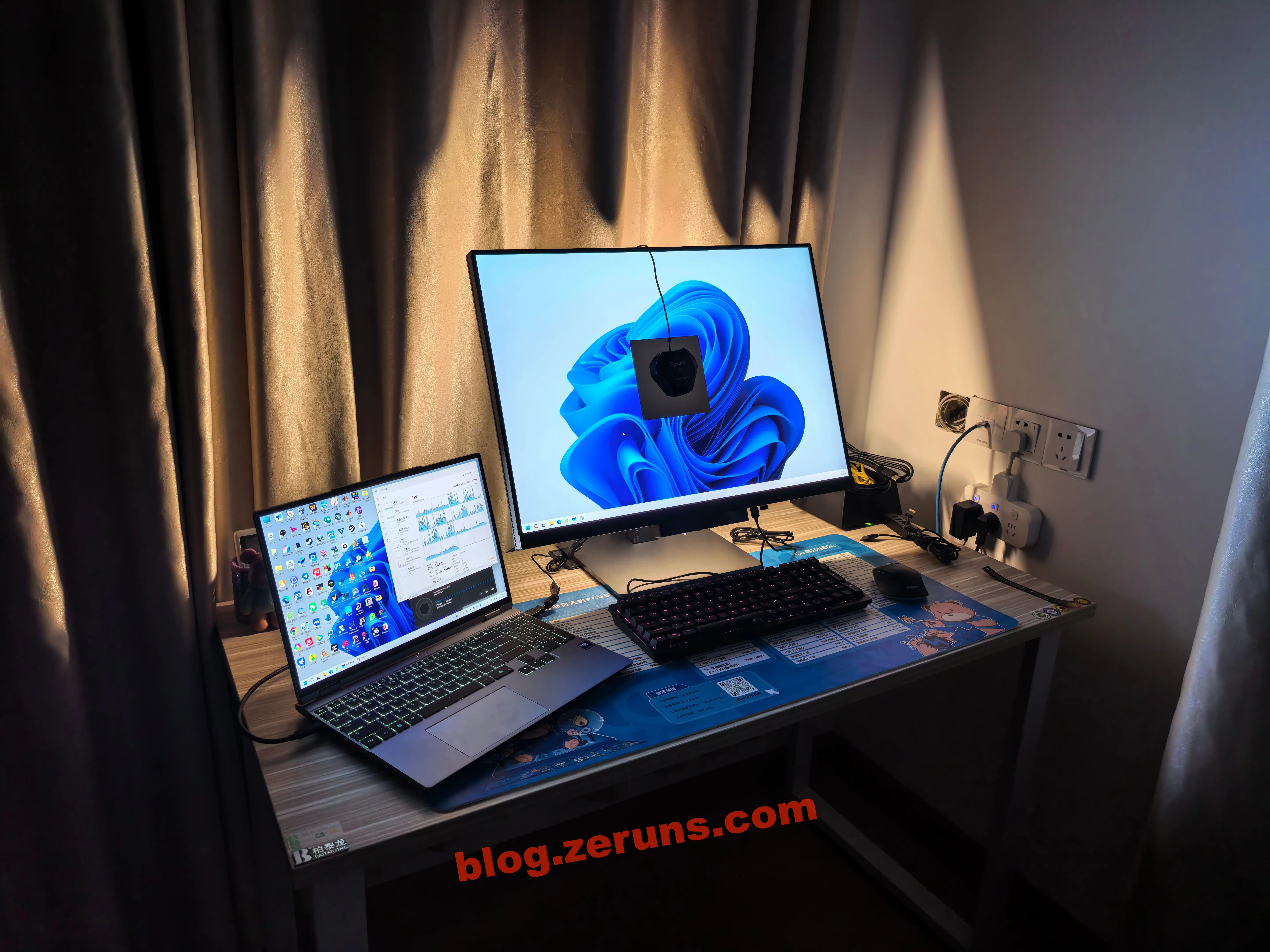
The "small chin" at the bottom of the monitor houses an infrared proximity sensor and ambient light sensor. The center of the chin features a touch button for quick color mode switching.
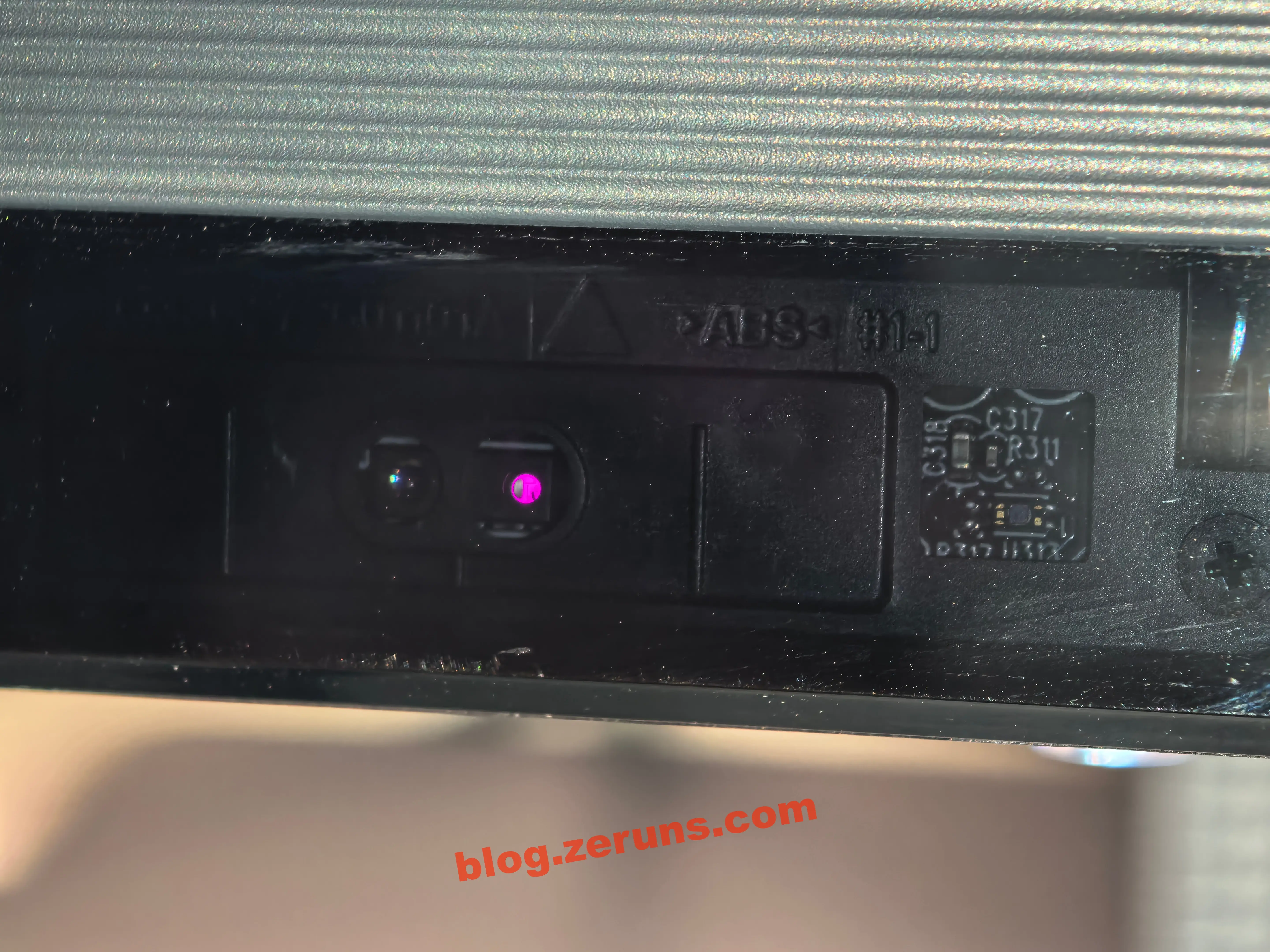
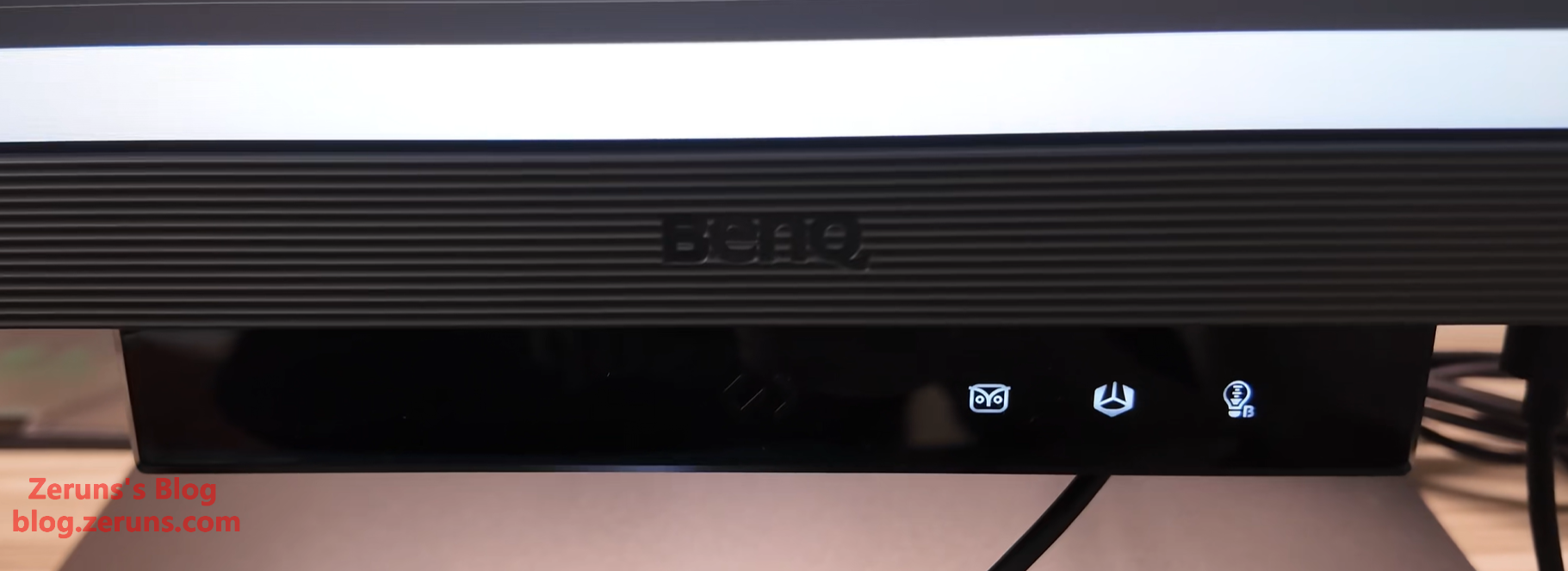
The effect after enabling "Coding - Dark Theme" color mode. This mode isn't just a simple software filter - BenQ has specifically tuned the monitor's colors at the hardware level. When users switch to "Coding - Dark Theme" via the OSD menu or dedicated touch button, the monitor directly drives the panel to optimize color, temperature, and contrast for different syntax elements commonly found in code editors (such as keywords, strings, comments, etc.). The principle involves enhancing specific color saturation while precisely controlling brightness output, intelligently strengthening the visual hierarchy between code and dark backgrounds while ensuring color accuracy. Combined with my usual VSCode dark theme, the most immediate feeling is "comfortable": thanks to hardware-level optimization, the background black appears deeper and purer, while the contrast between code text and background is effectively enhanced, making syntax-highlighted colors more prominent without being harsh.
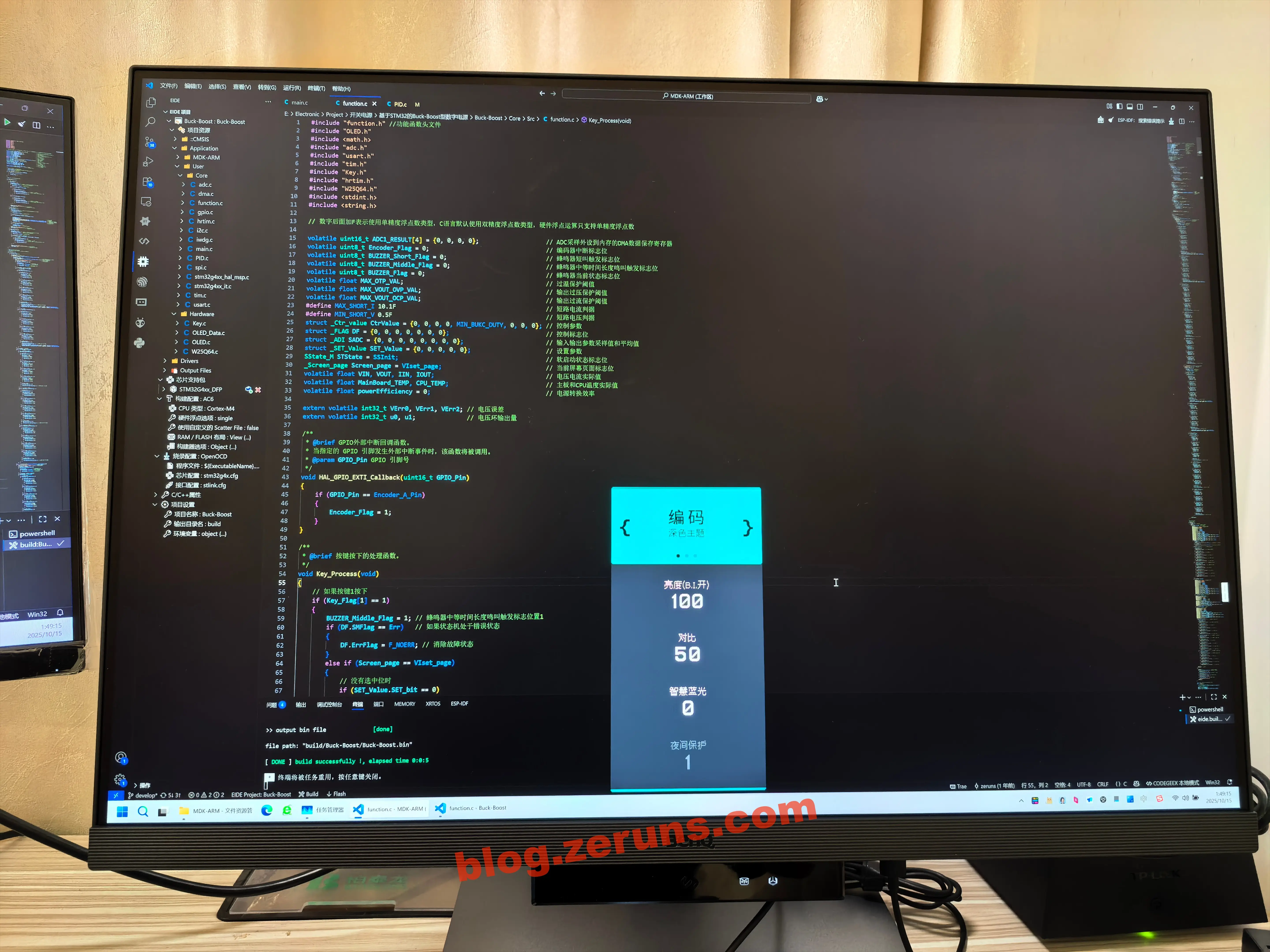
Comparison with other monitors
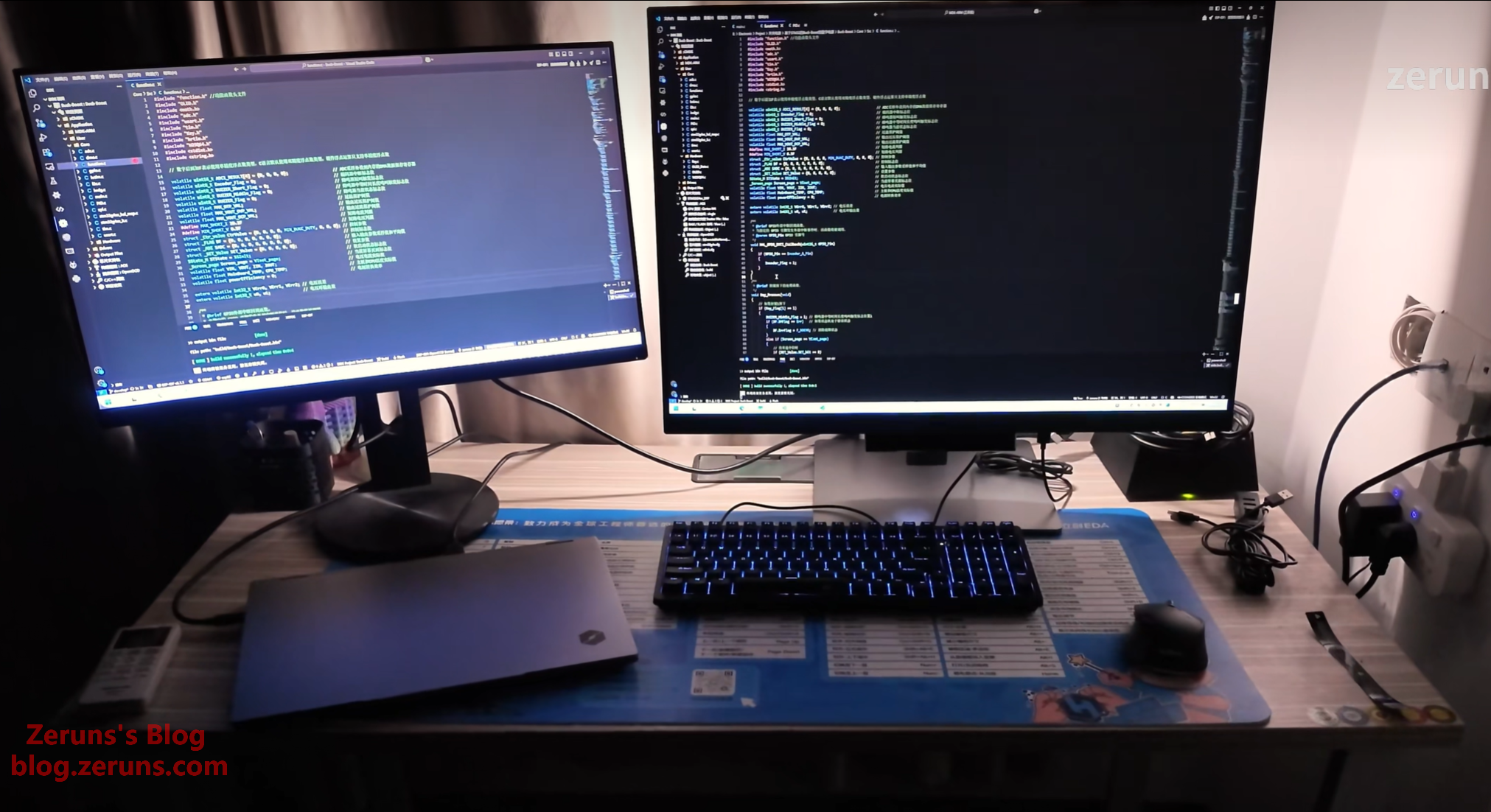
Screen EDID information shows 28.4-inch screen size, model BNQ805b, production week 46 of 2023, sRGB color gamut 138.22%.
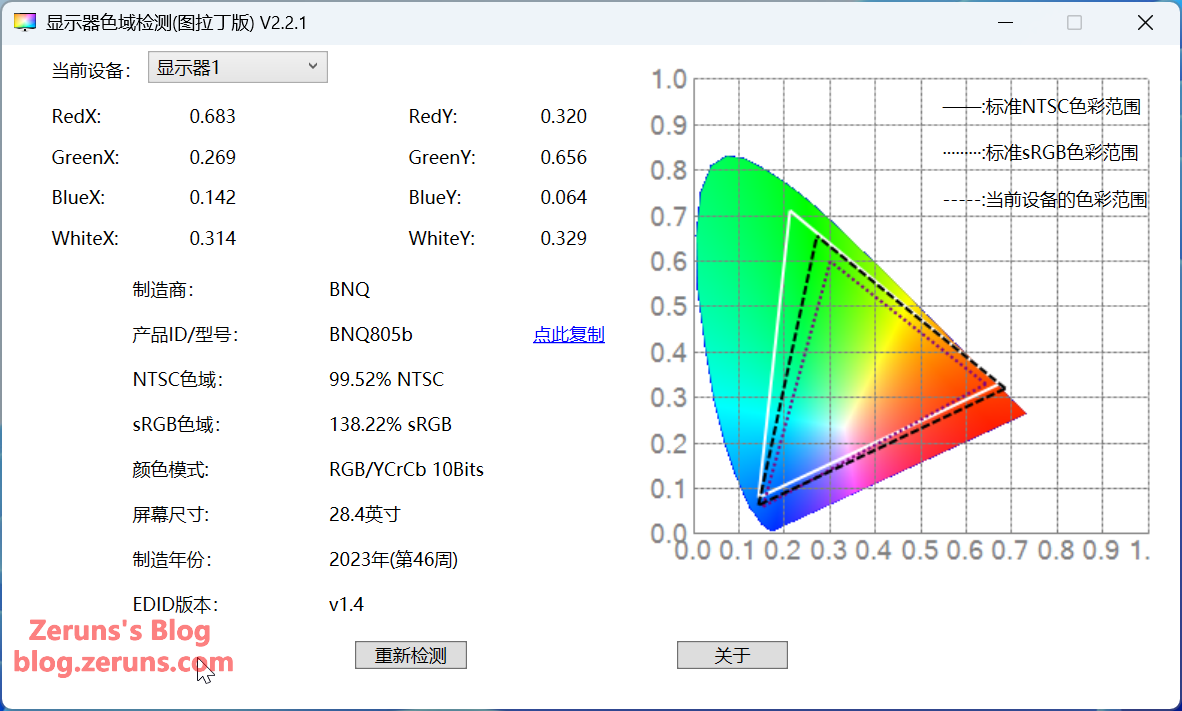
Actual measured color gamut and accuracy data using Spyder5 calibrator: sRGB coverage 96.2%, volume 117.7%, average color difference (Average ΔE*00) measured at 2.23 - decent, maximum deviation (Maximum ΔE*00) measured at 6.26, which is quite high. The maximum deviation is in the blue region, likely related to the hardware blue light filtering.
Detailed report: https://url.zeruns.com/RD280U
The measured color gamut range is shown below. The dashed line represents sRGB color space, while the colored line shows this monitor's actual color gamut. You can see that the blue portion of sRGB isn't fully covered, and in actual viewing, blue color depth does seem lacking compared to other monitors.
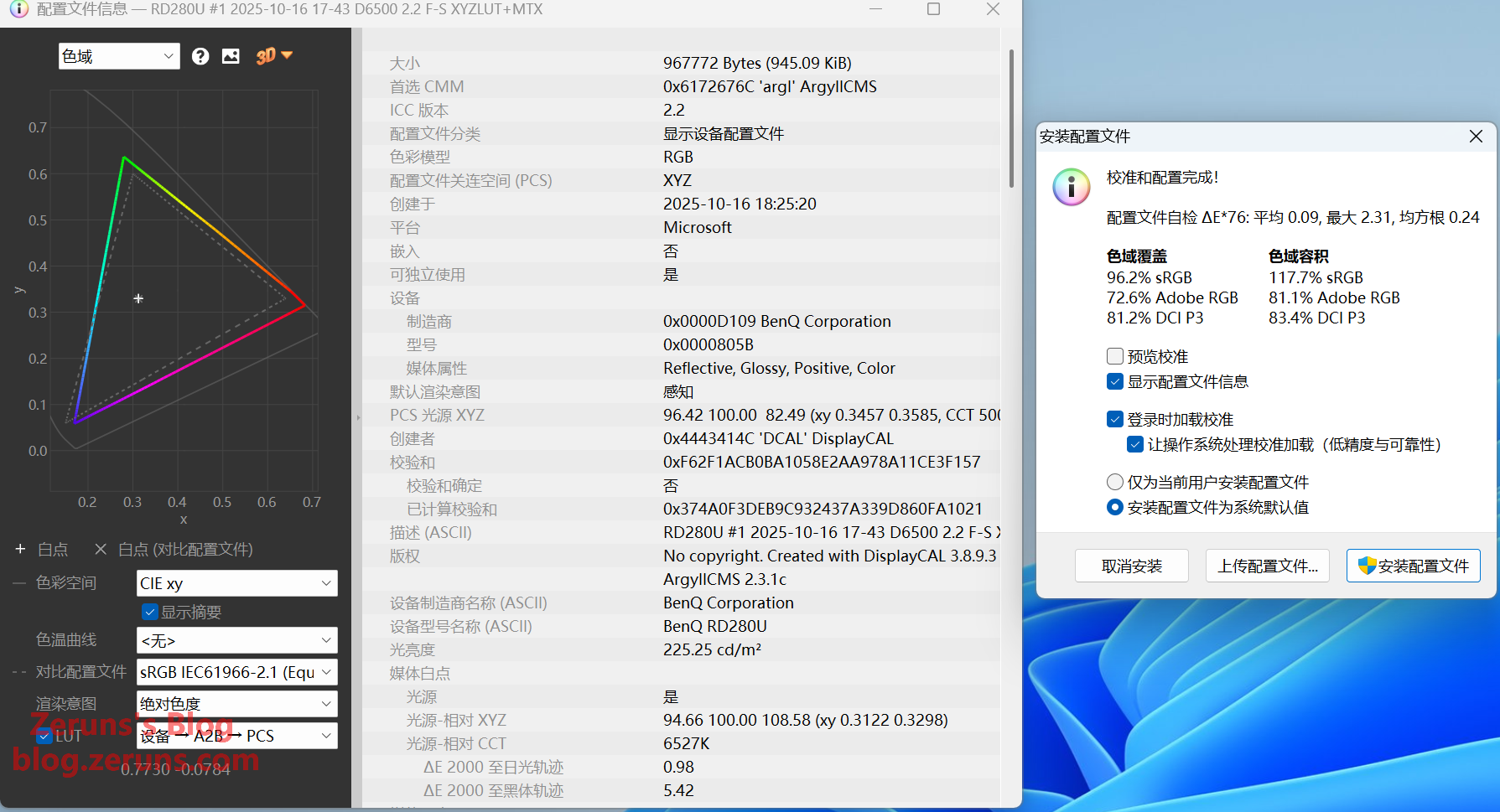
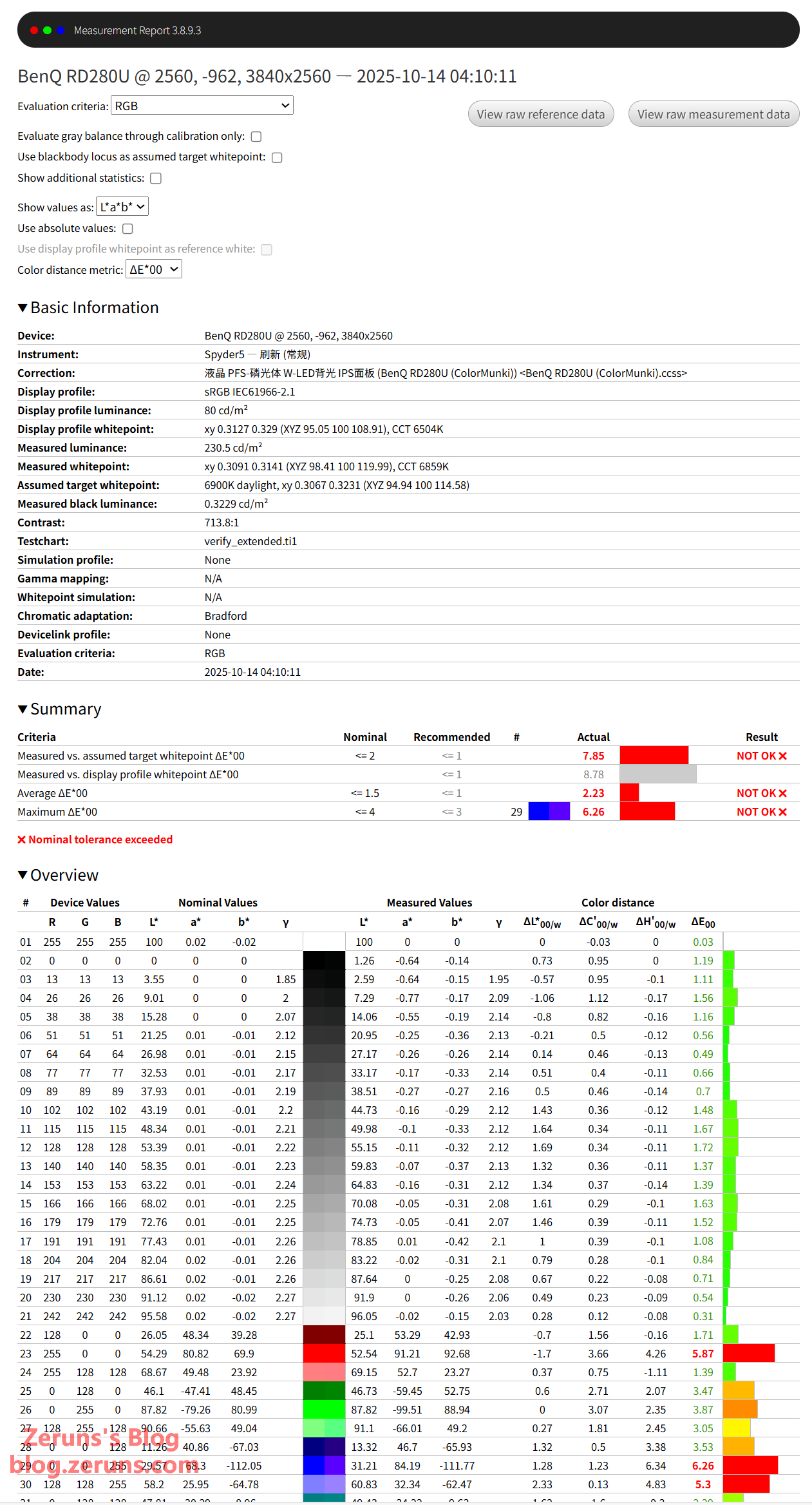
The fast charging protocols supported by the monitor's Type-C port are shown below, with maximum output of 20V/4.5A, 90 watts, supporting only PD protocol.
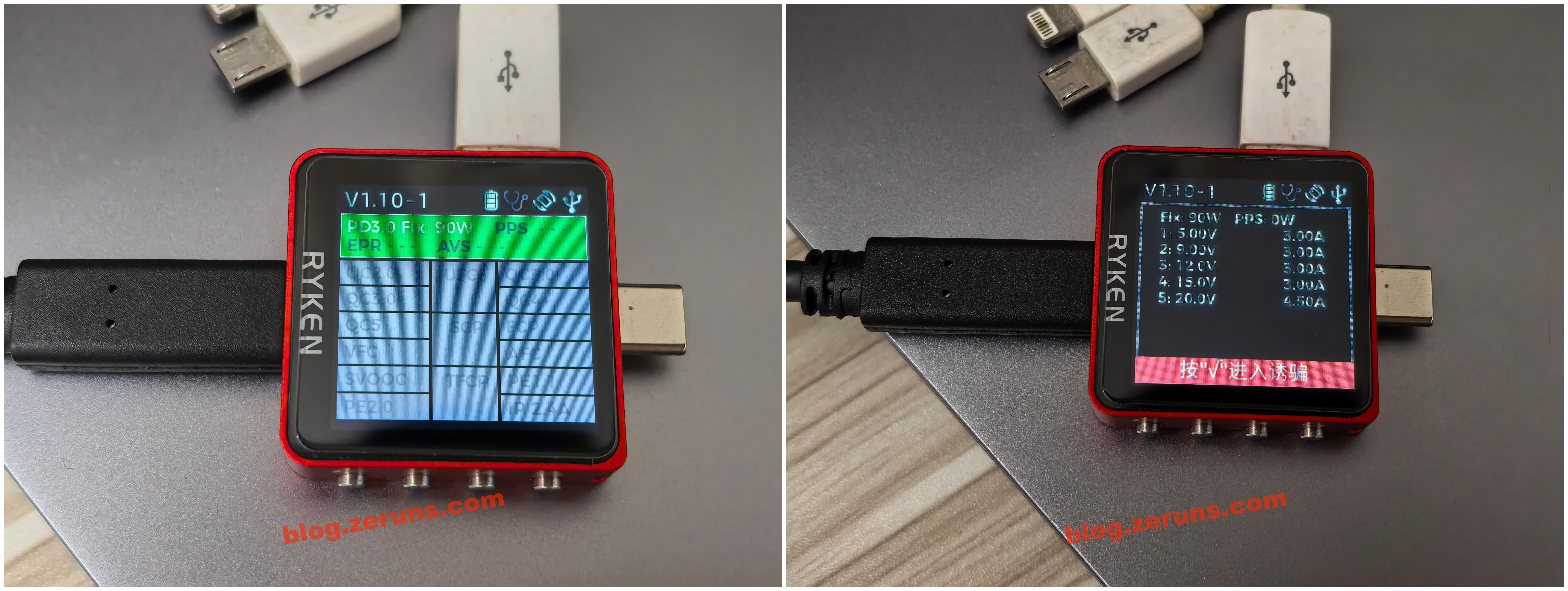
Voltage, current, and power when the monitor's Type-C port is connected to my laptop (laptop at full charge)
Mechanical Revolution Code10AI laptop (Ultra7-255H) unboxing review and teardown: https://blog.zeruns.top/archives/66.html
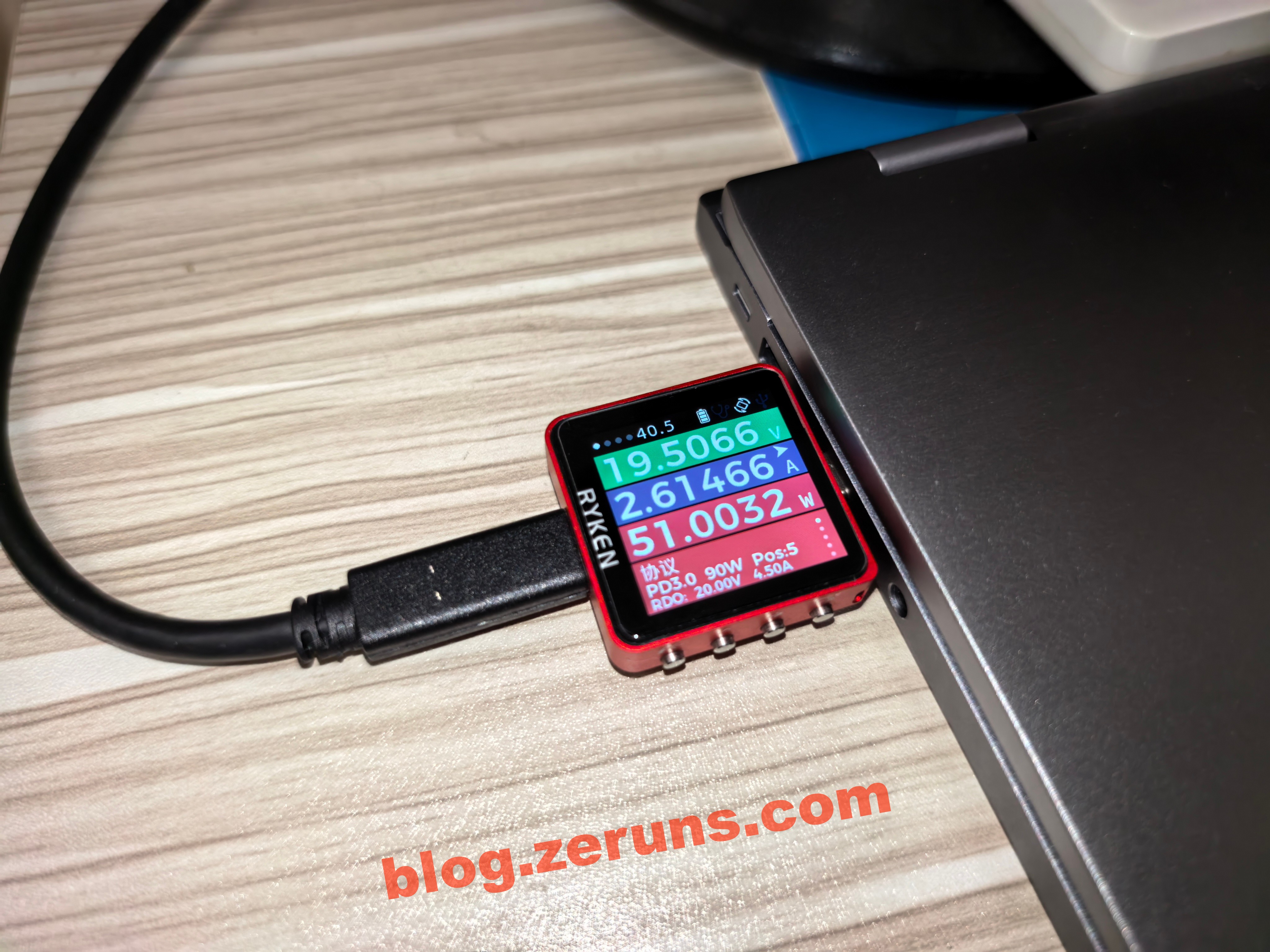
The output voltage ripple peak-to-peak is around 100mV when the monitor's Type-C port outputs 20V2.4A - acceptable. (Normally should be tested with resistive load, but I tested directly with the laptop connected, so it might not be accurate)
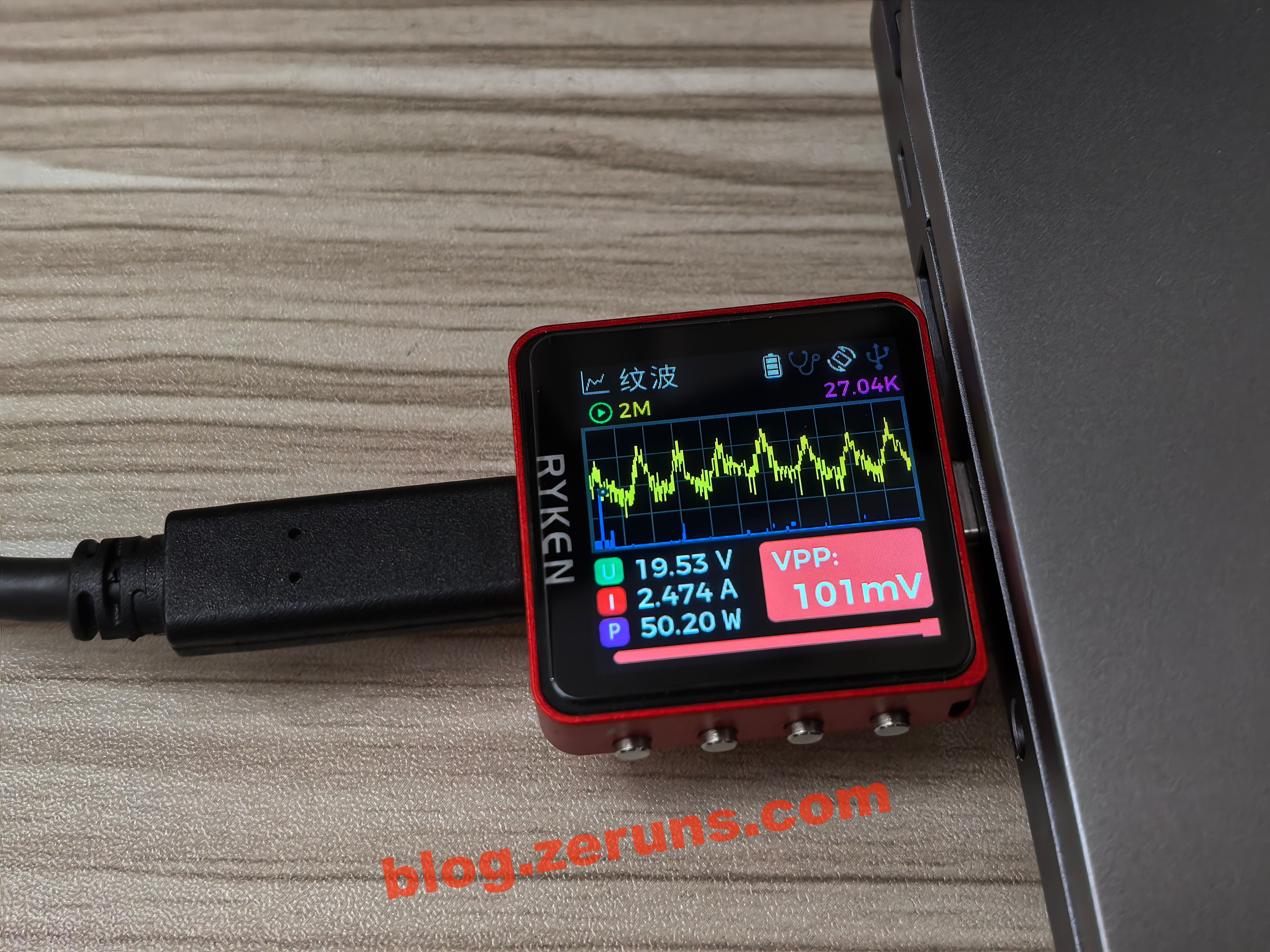
Standby power consumption is around 2.3 watts.
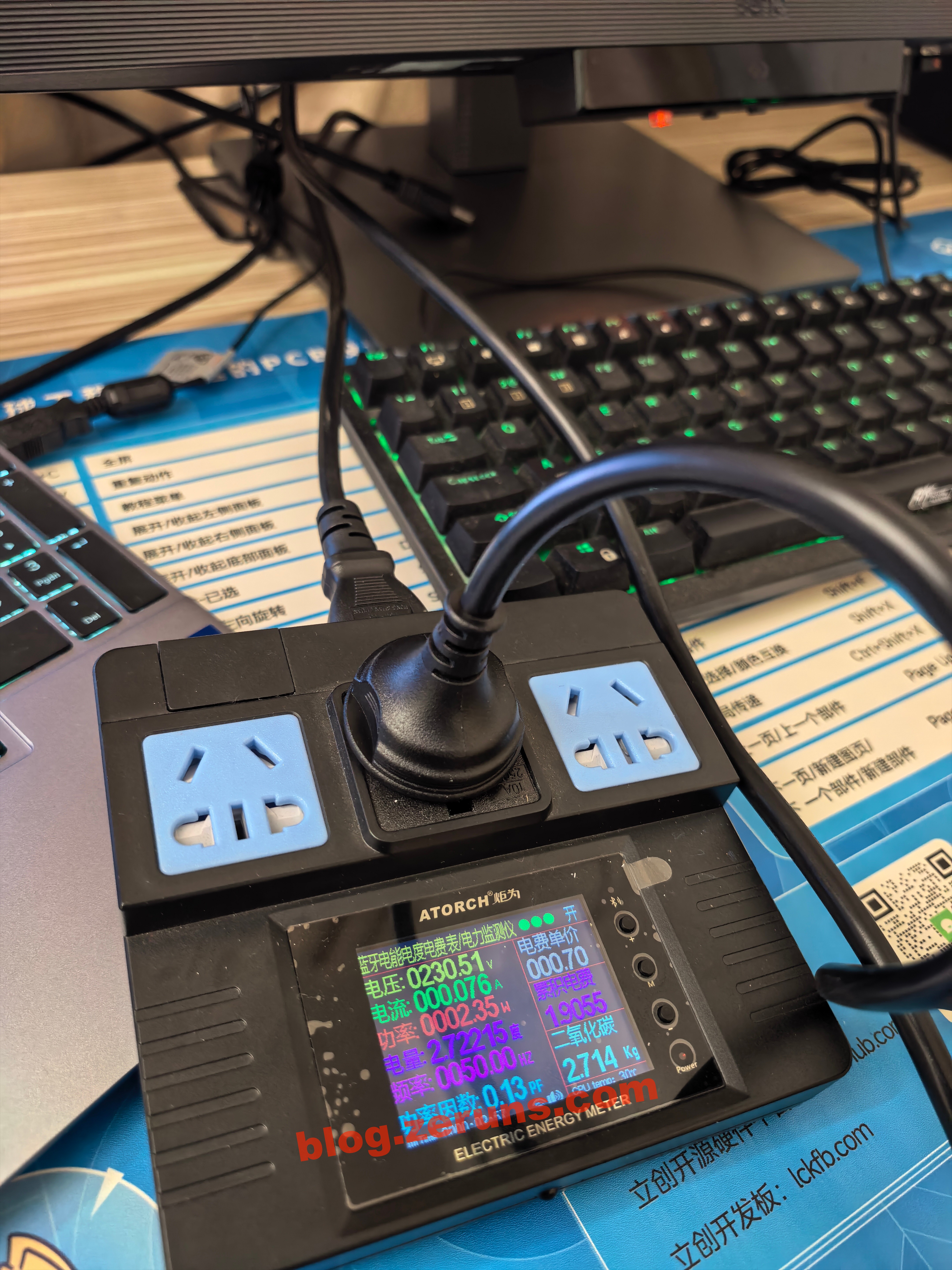
Power consumption around 42 watts when connected via HDMI with brightness at 100% and MoonHalo lighting enabled.
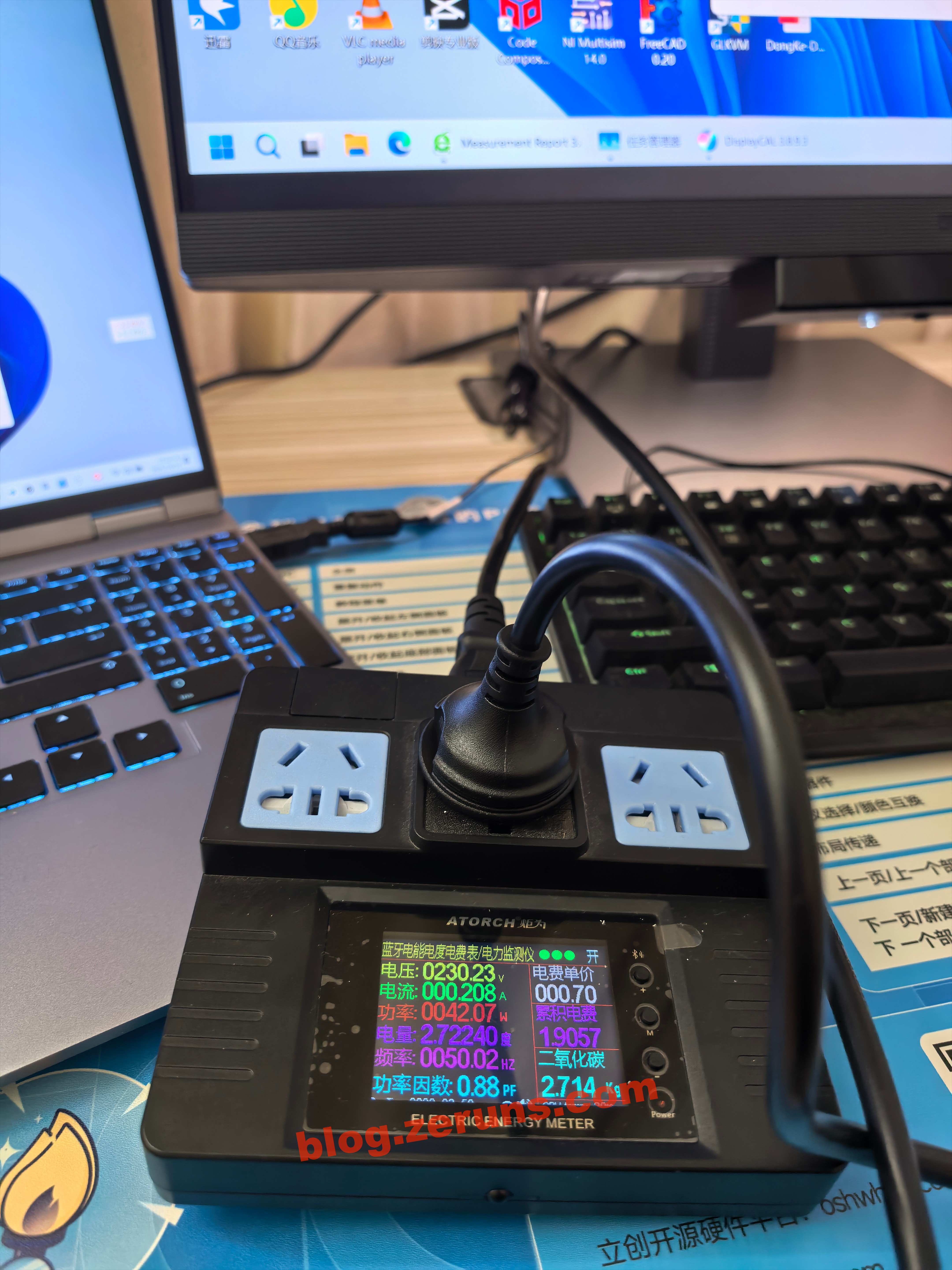
Power consumption around 101 watts when connected via Type-C to laptop (laptop consuming about 50 watts). Power factor 0.99, indicating active PFC circuit.
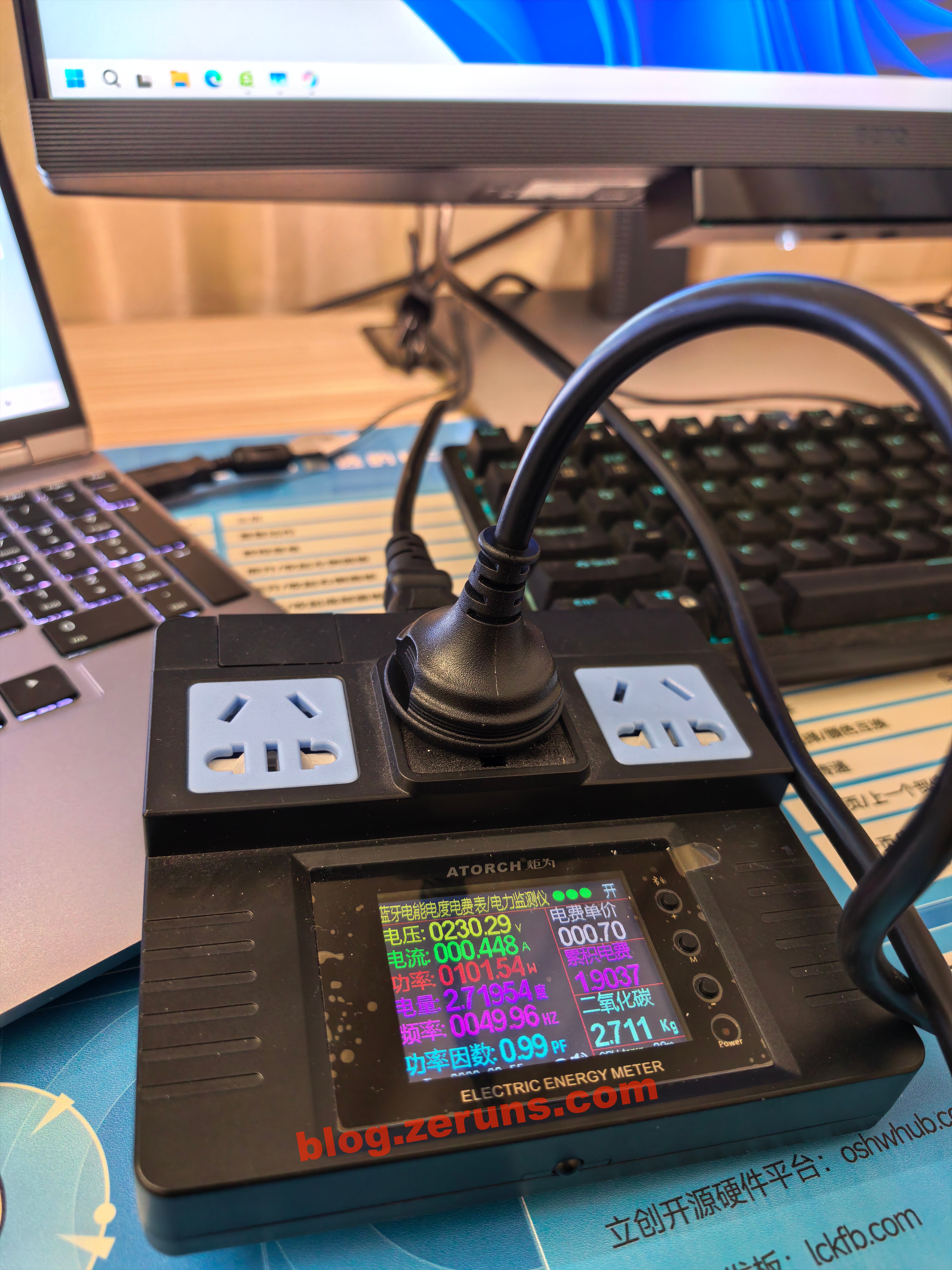
Thermal imaging of screen heat distribution below. Heat is mainly concentrated at the bottom of the screen, where the backlight is likely located. Maximum temperature 46.1°C (room temperature around 26°C).
UNI-T UTi261M thermal imaging camera unboxing review: https://blog.zeruns.com/archives/798.html
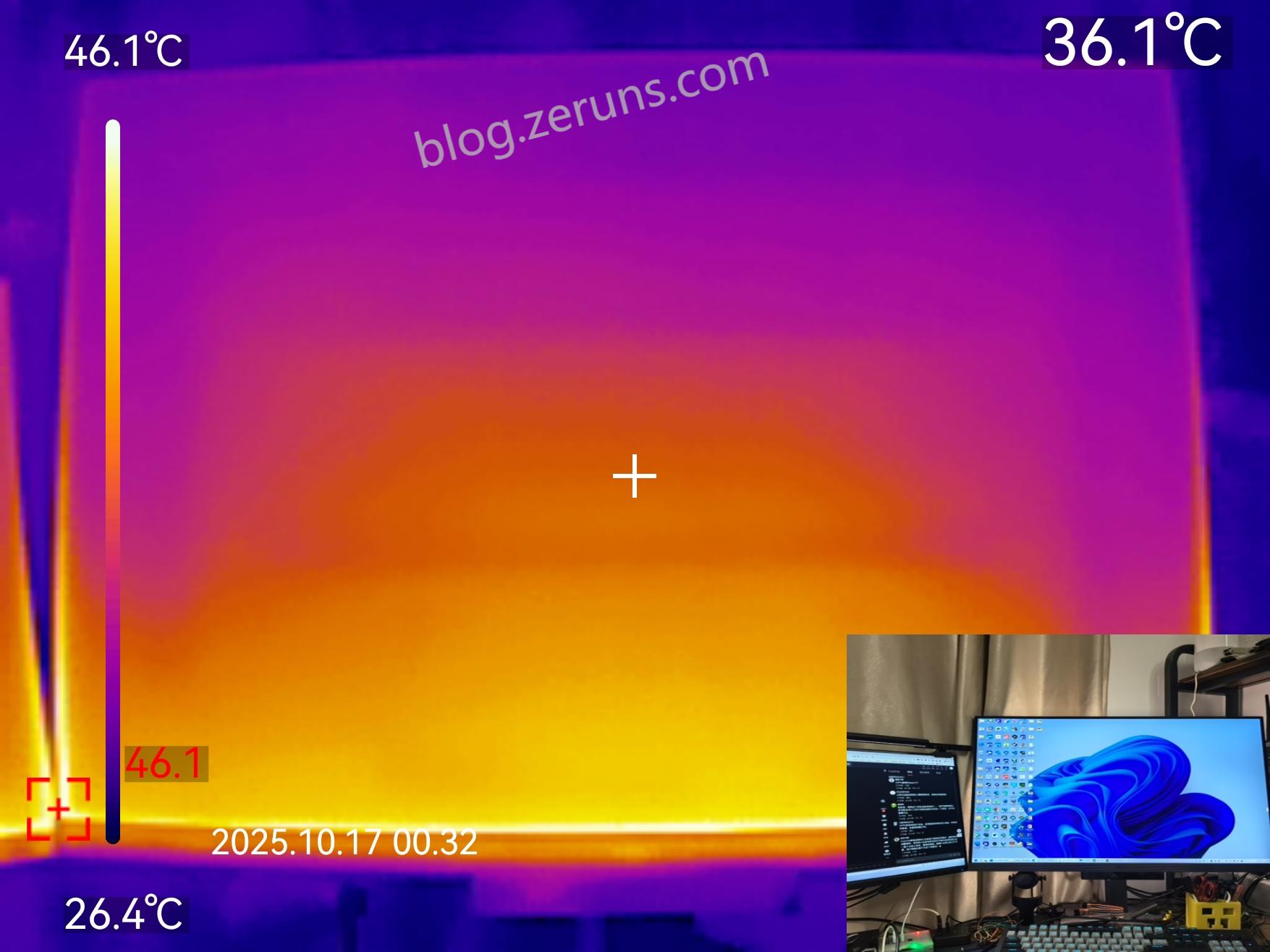
Recommended Reading
- High cost-effective and cheap VPS/Cloud Server Recommendations: https://blog.zeruns.com/archives/383.html
- Minecraft Server Setup Tutorial: https://blog.zeruns.com/tag/mc/
- [Open Source] 24V3A Flyback Switching Power Supply: https://blog.zeruns.top/archives/74.html
- RainCloud RCA Cloud Application (K8s-based) PHP Website Setup Tutorial: https://blog.zeruns.top/archives/54.html
- DJI Mini 2 Drone Teardown Analysis: https://blog.zeruns.top/archives/75.html
- ALLinSSL Deployment and Usage Tutorial - Automated SSL Certificate Application, Renewal, Deployment, Monitoring: https://blog.zeruns.com/archives/877.html

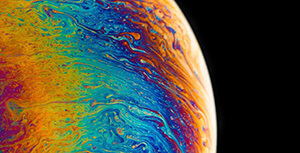



Comment Section